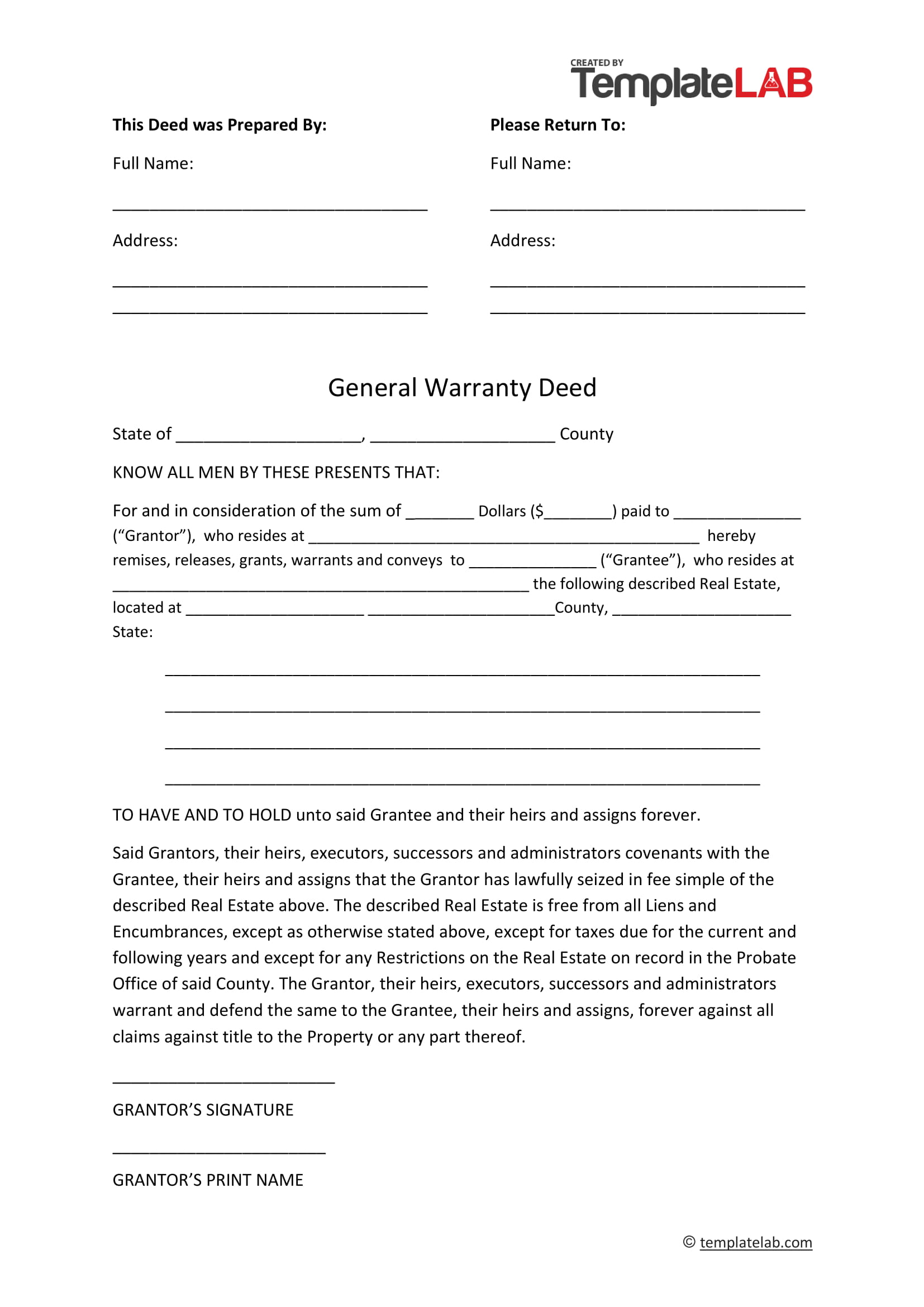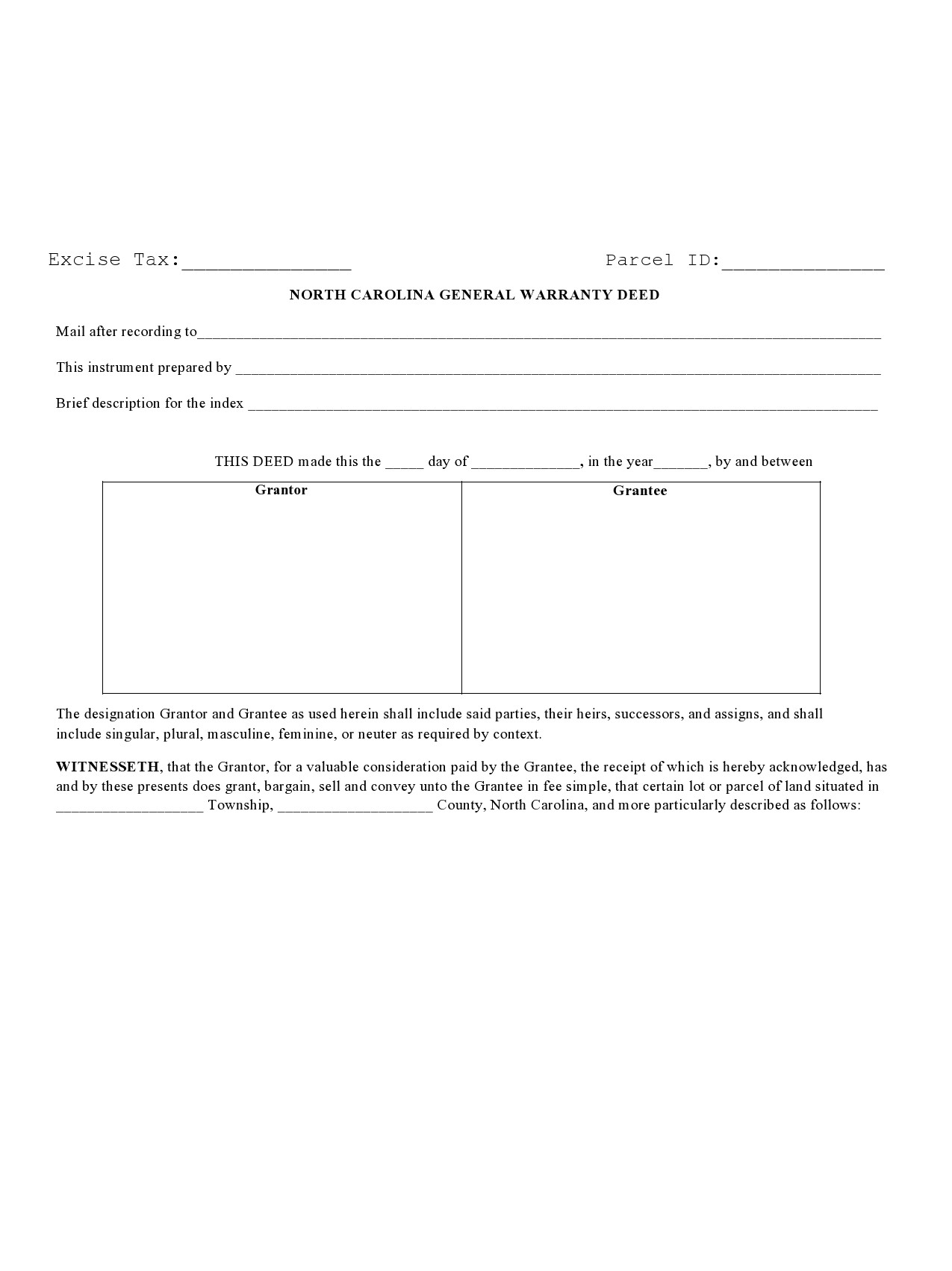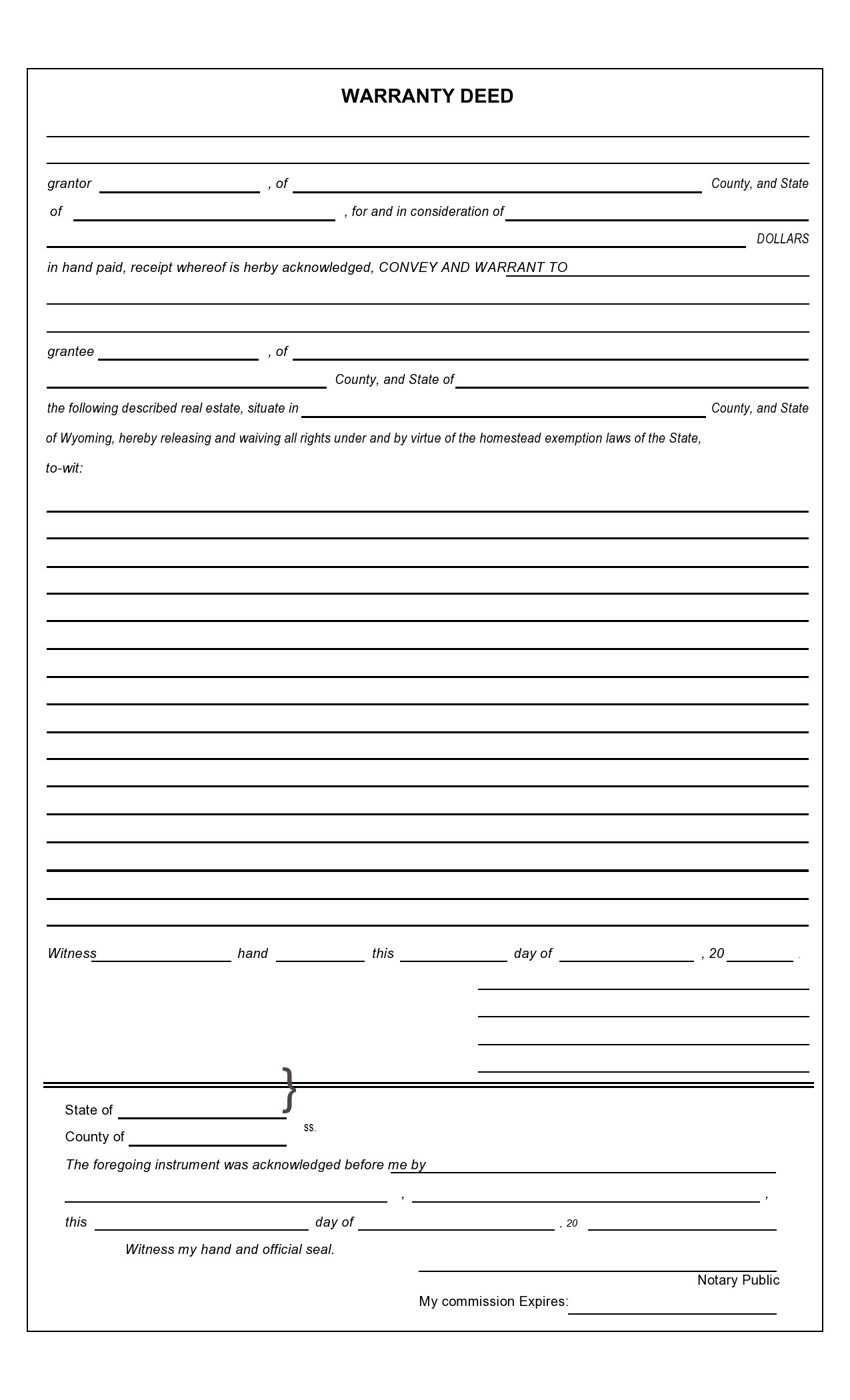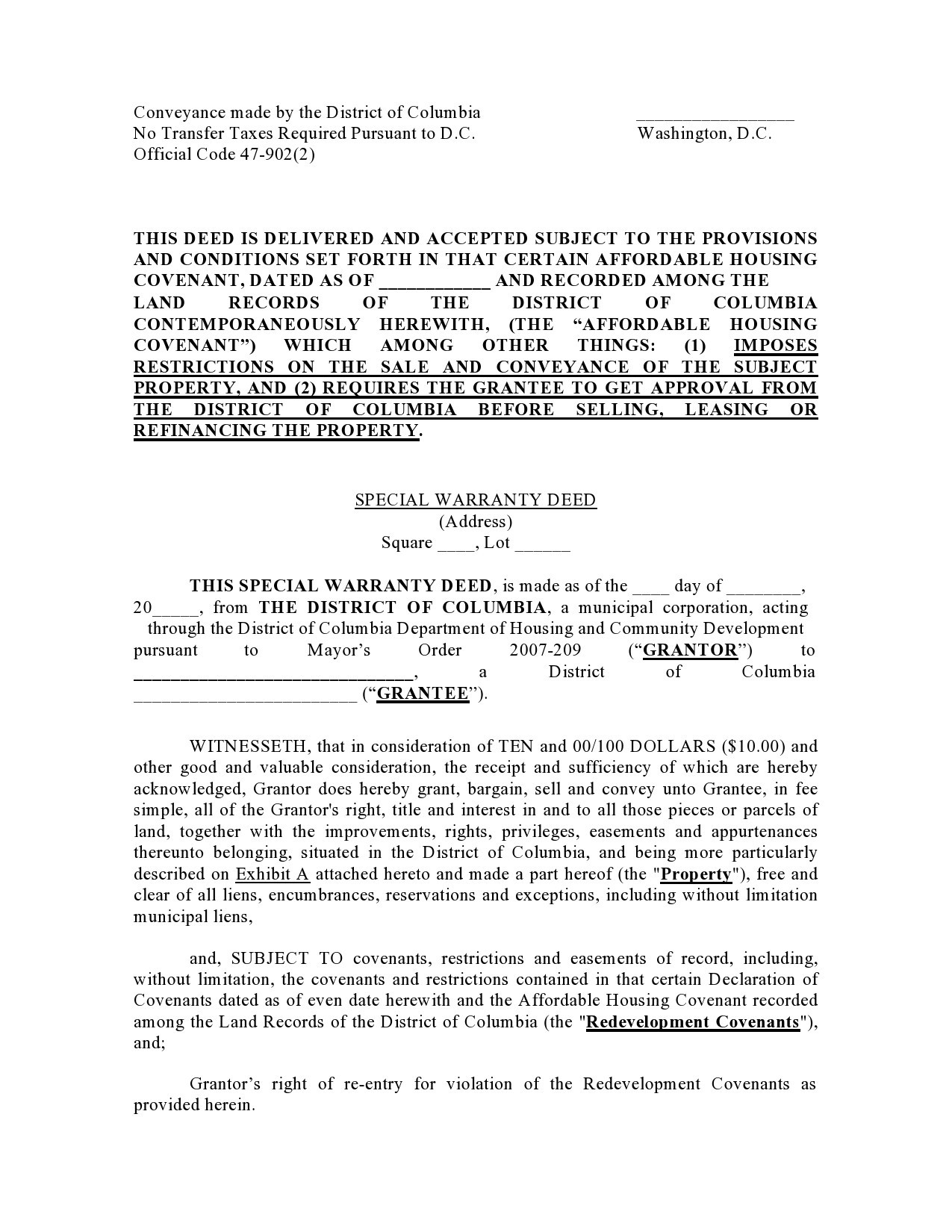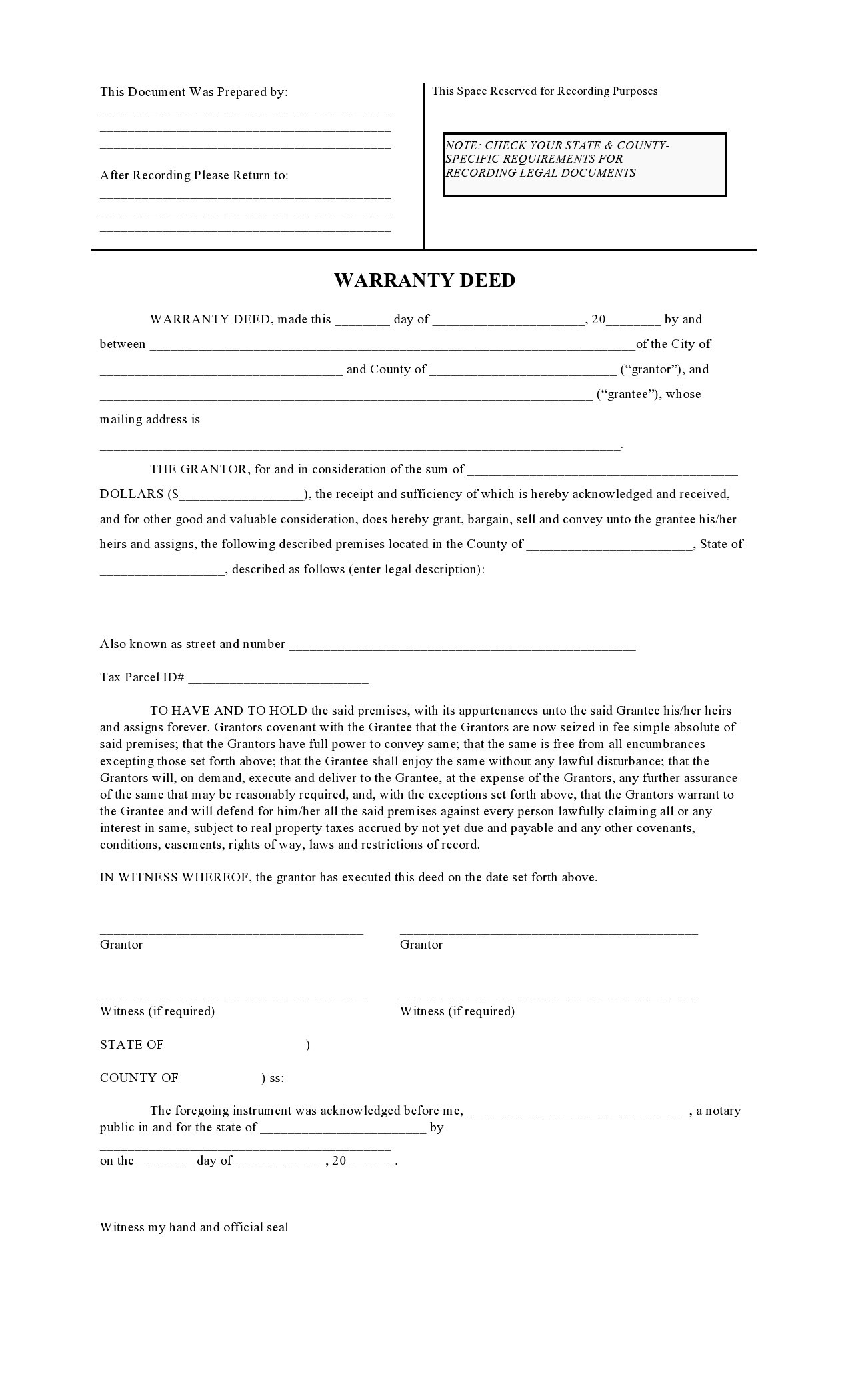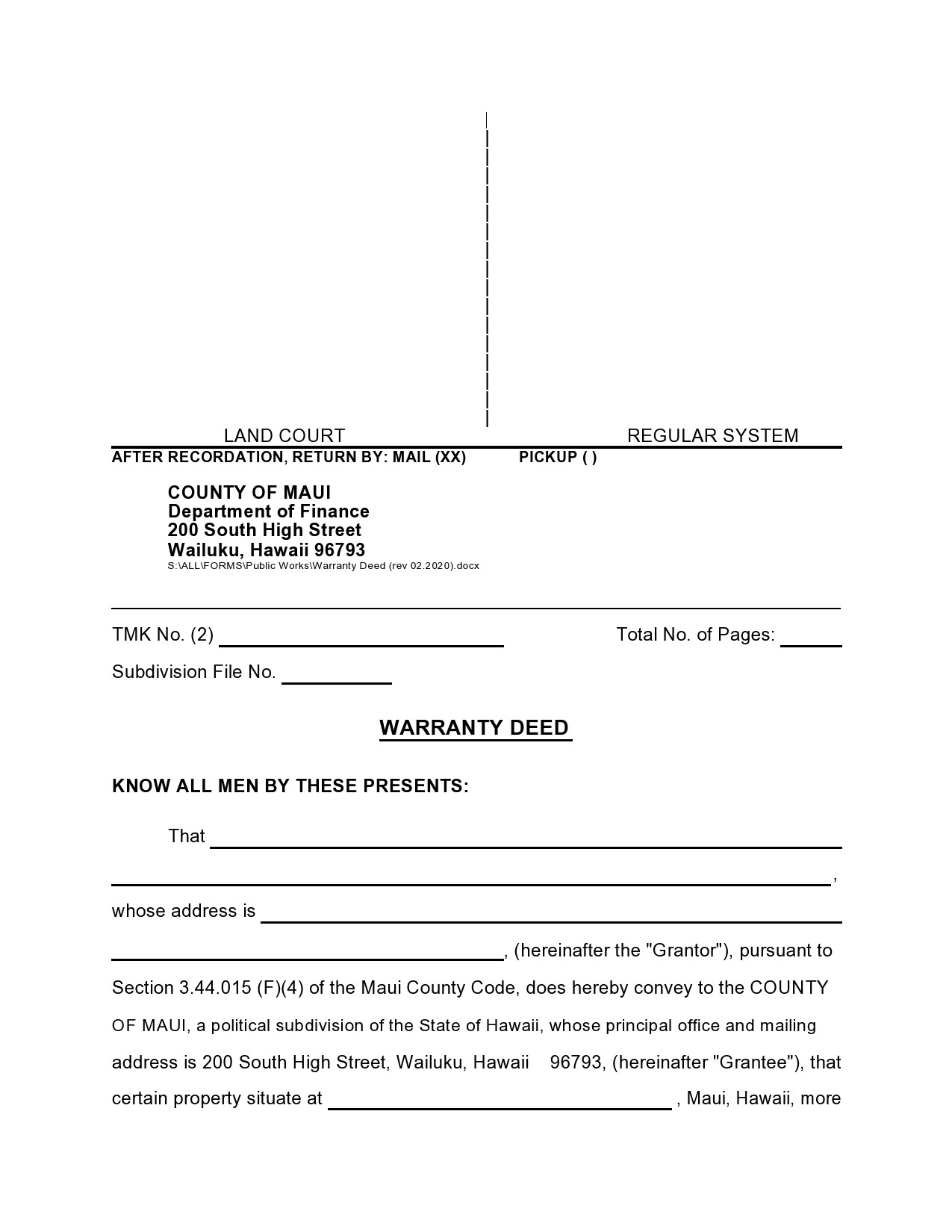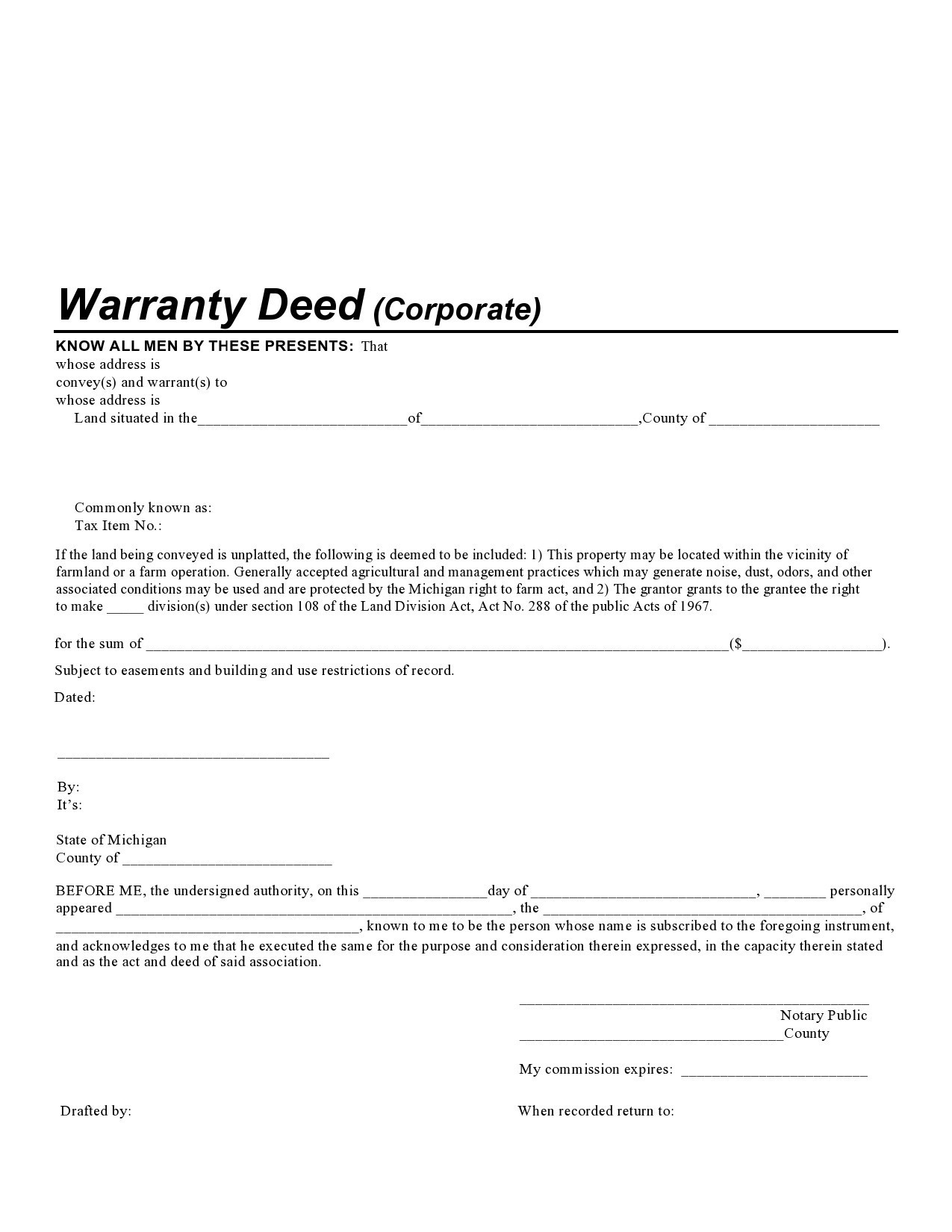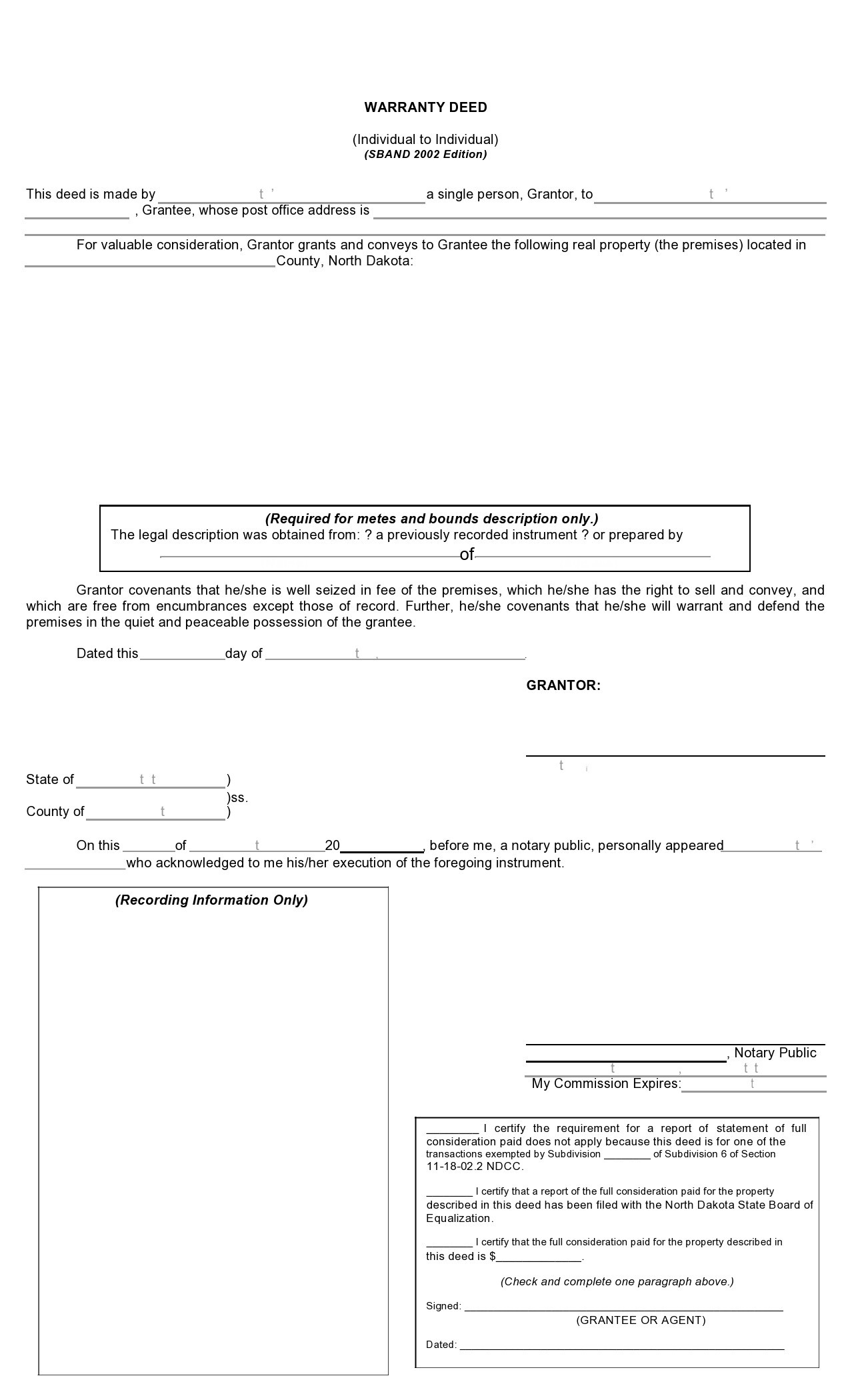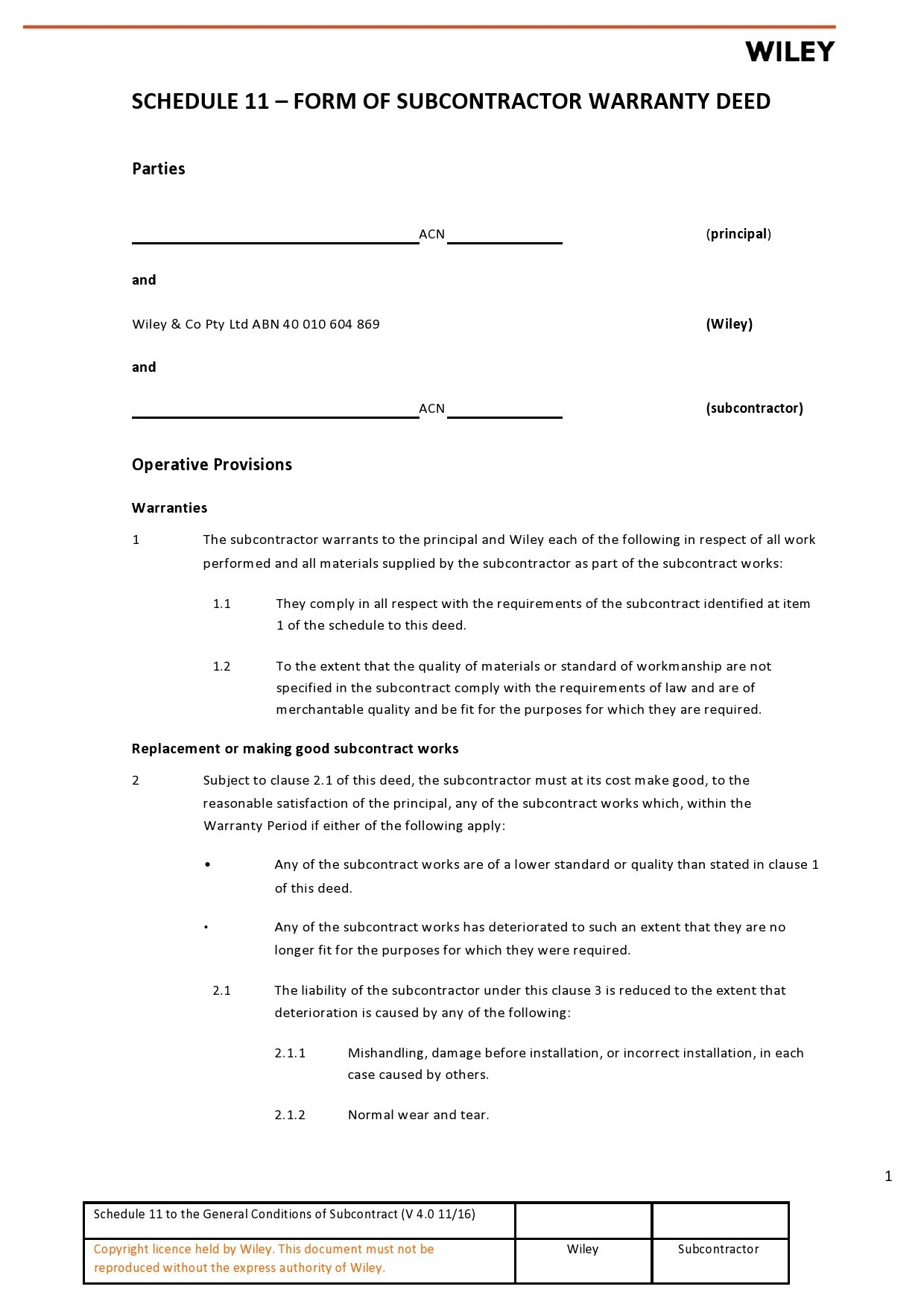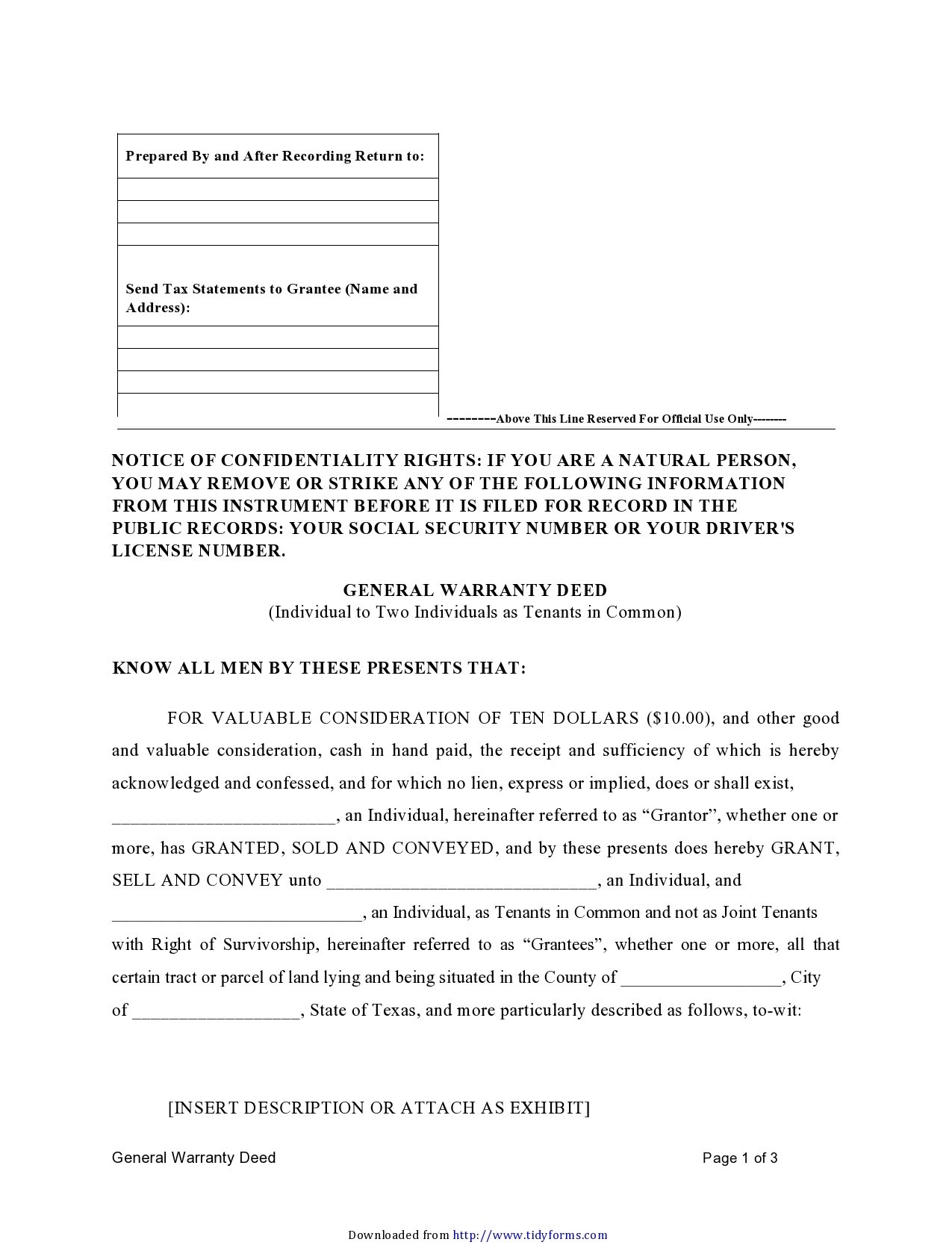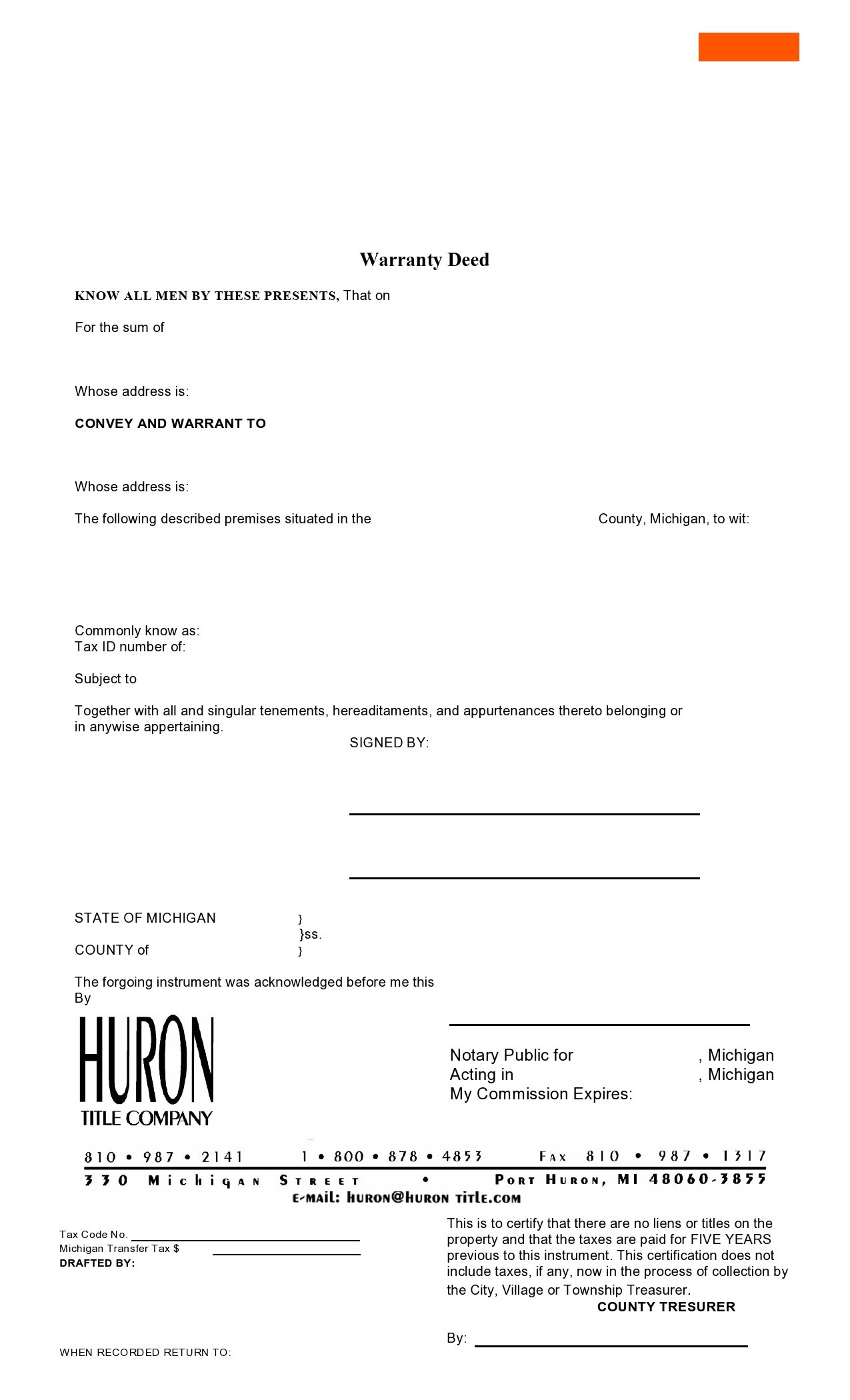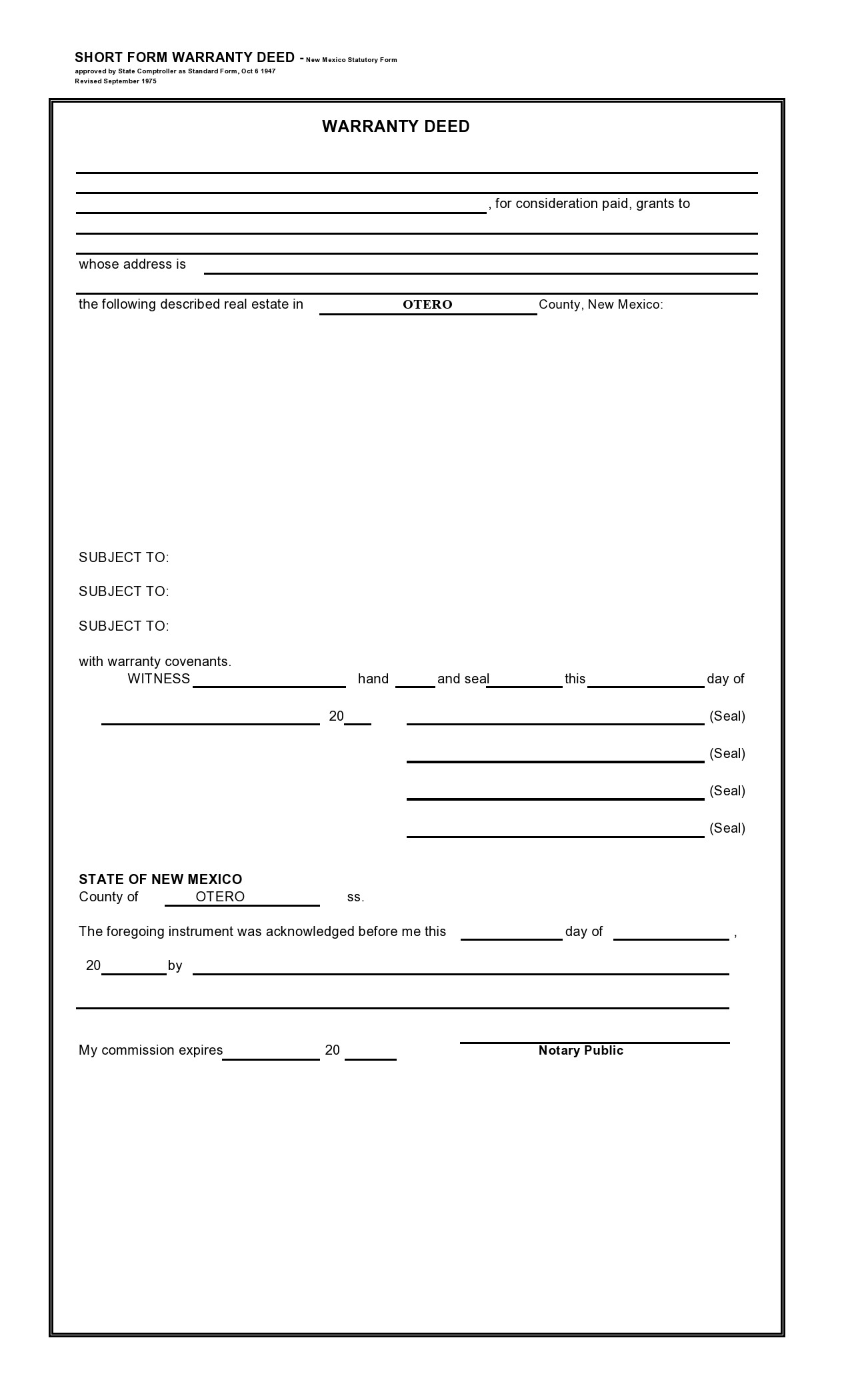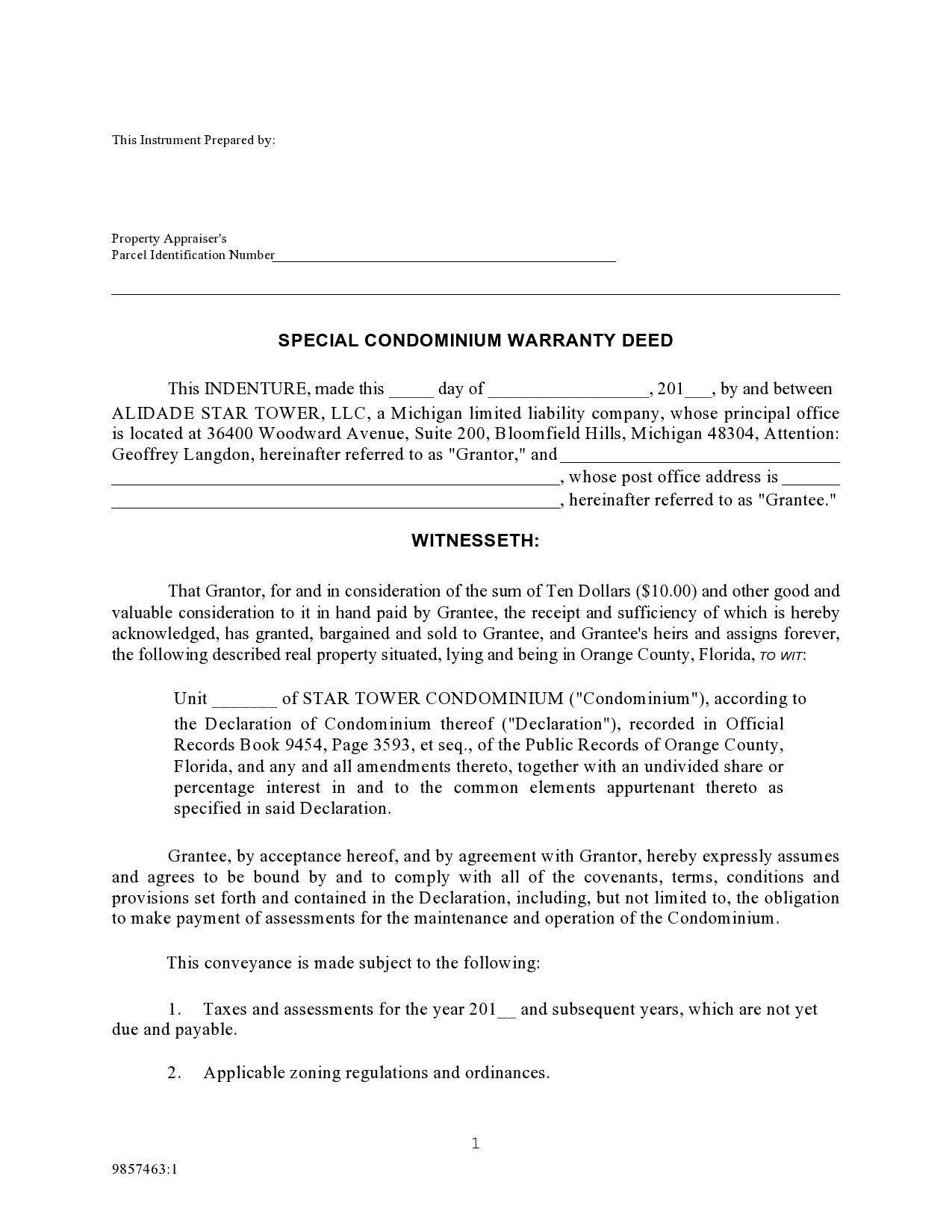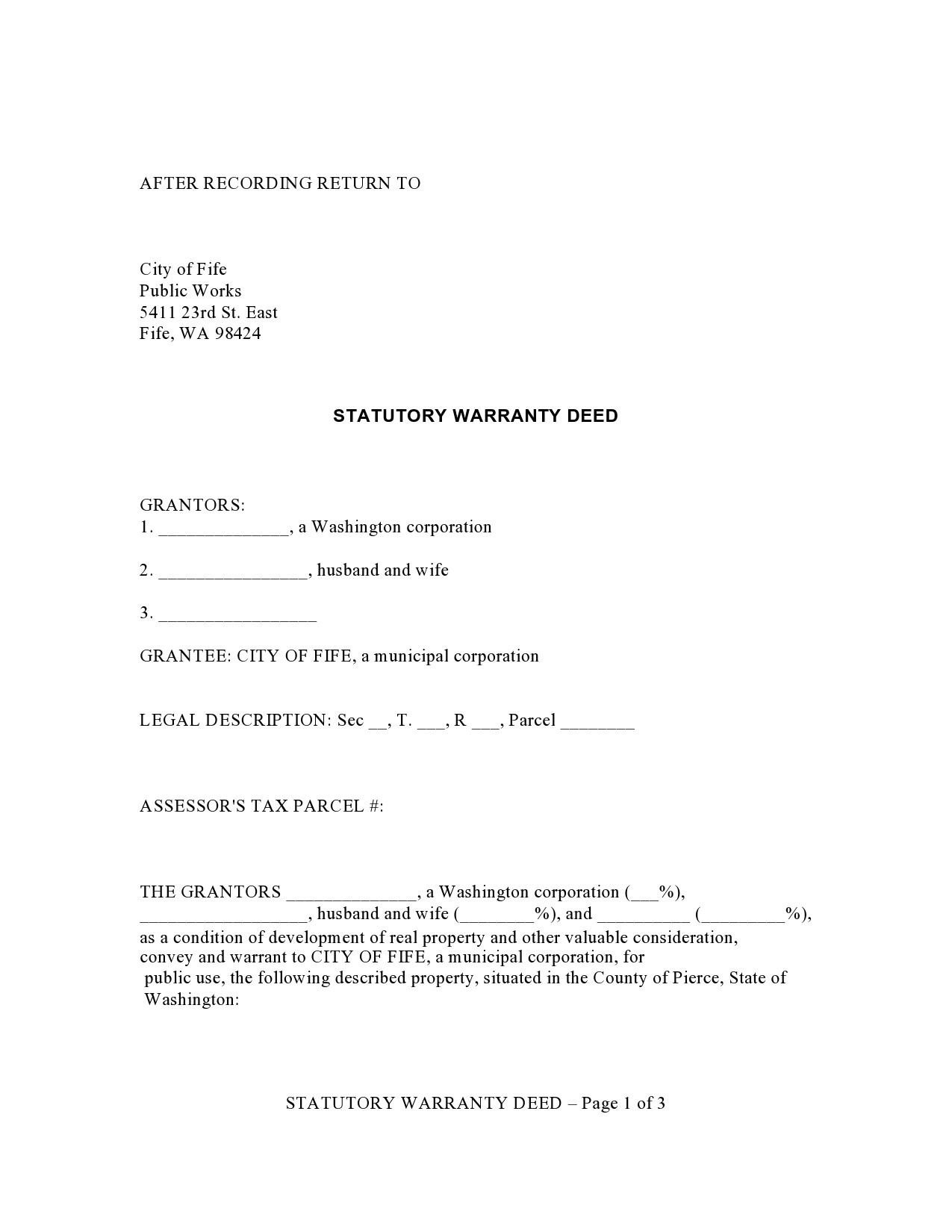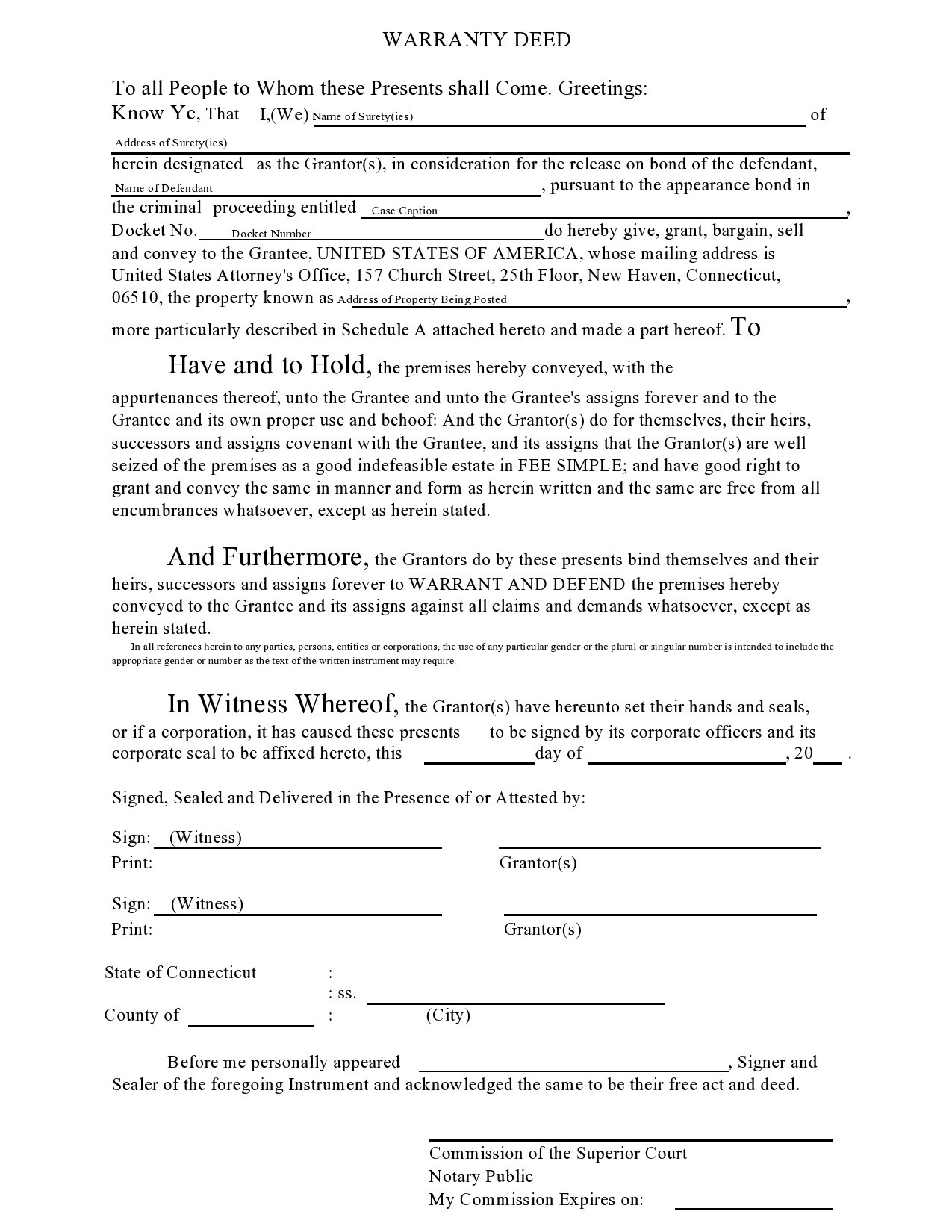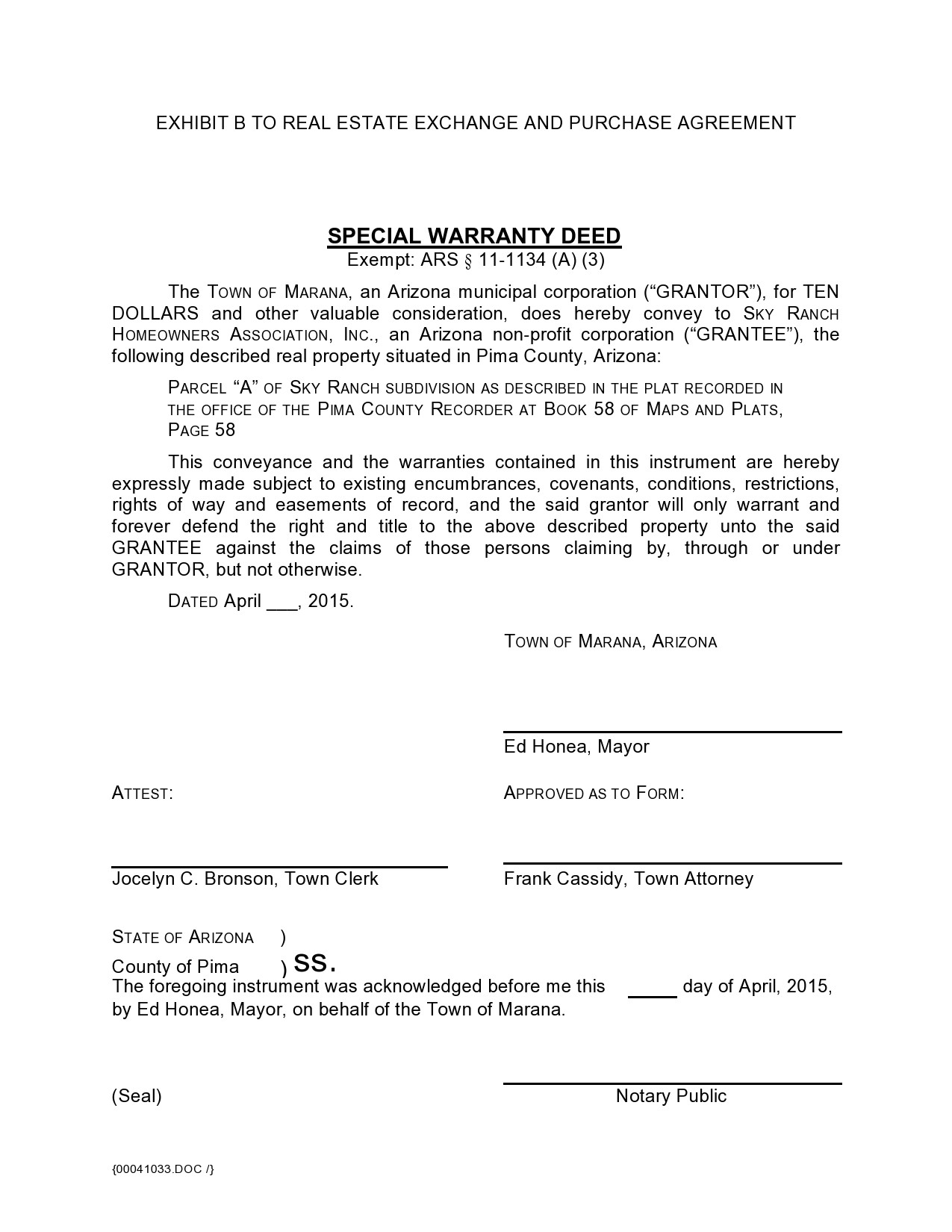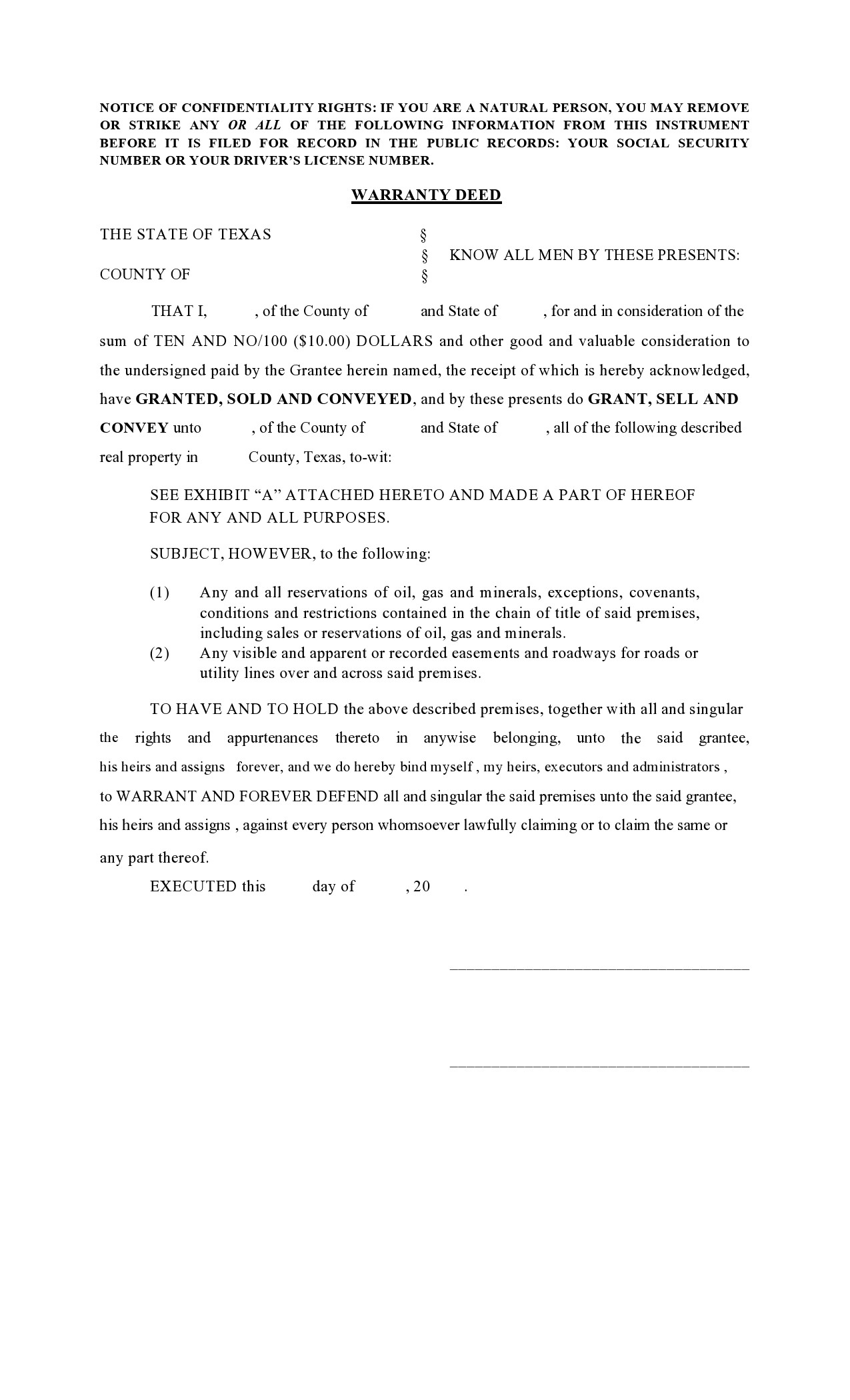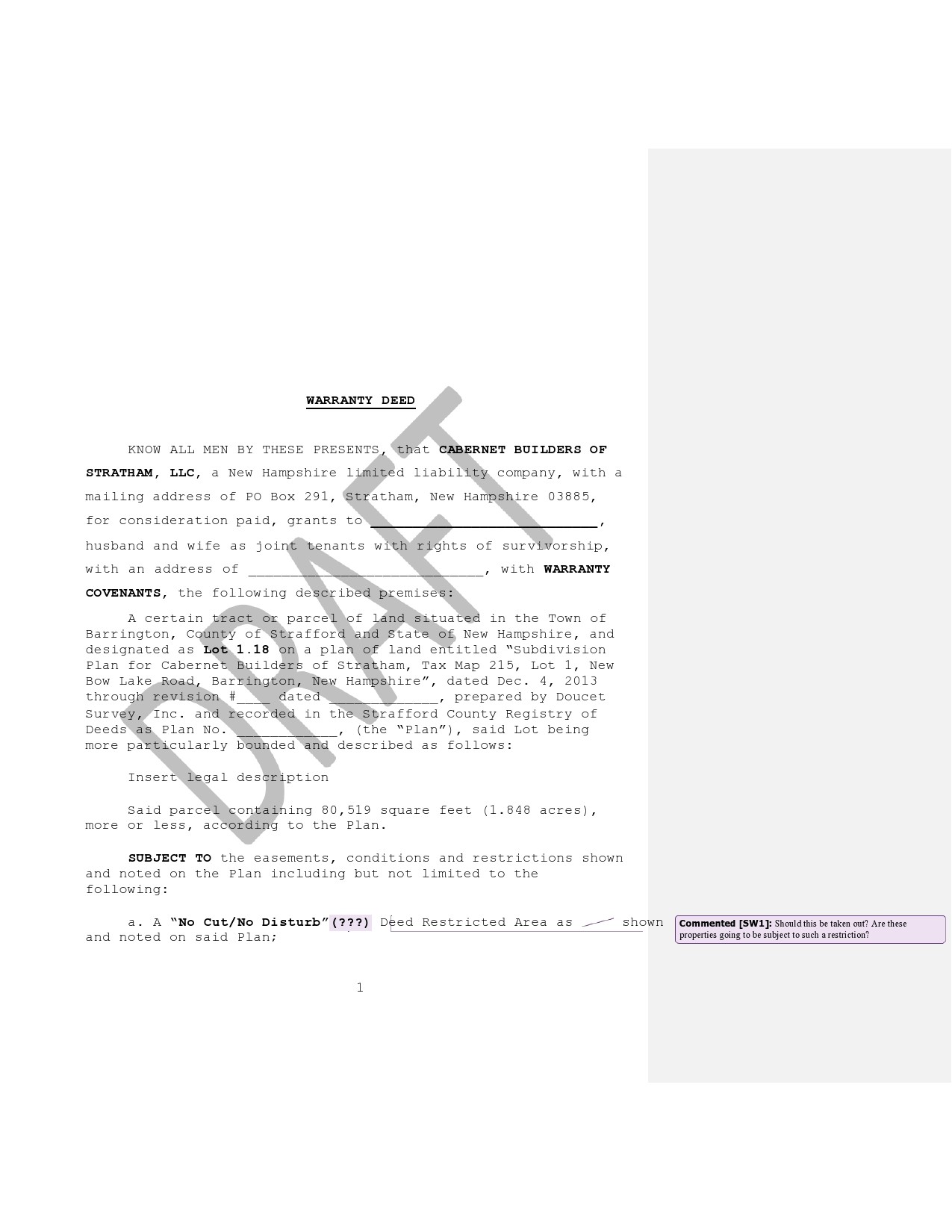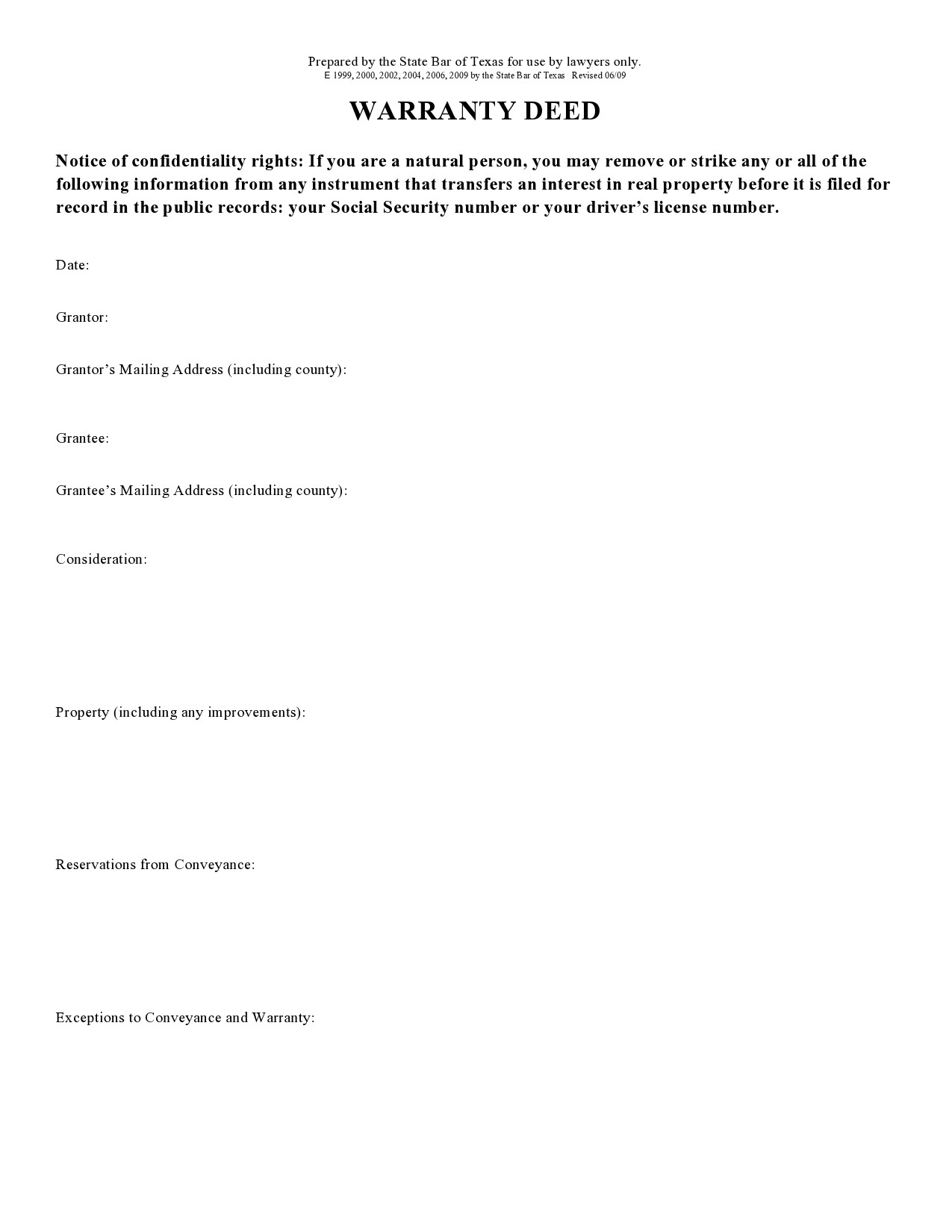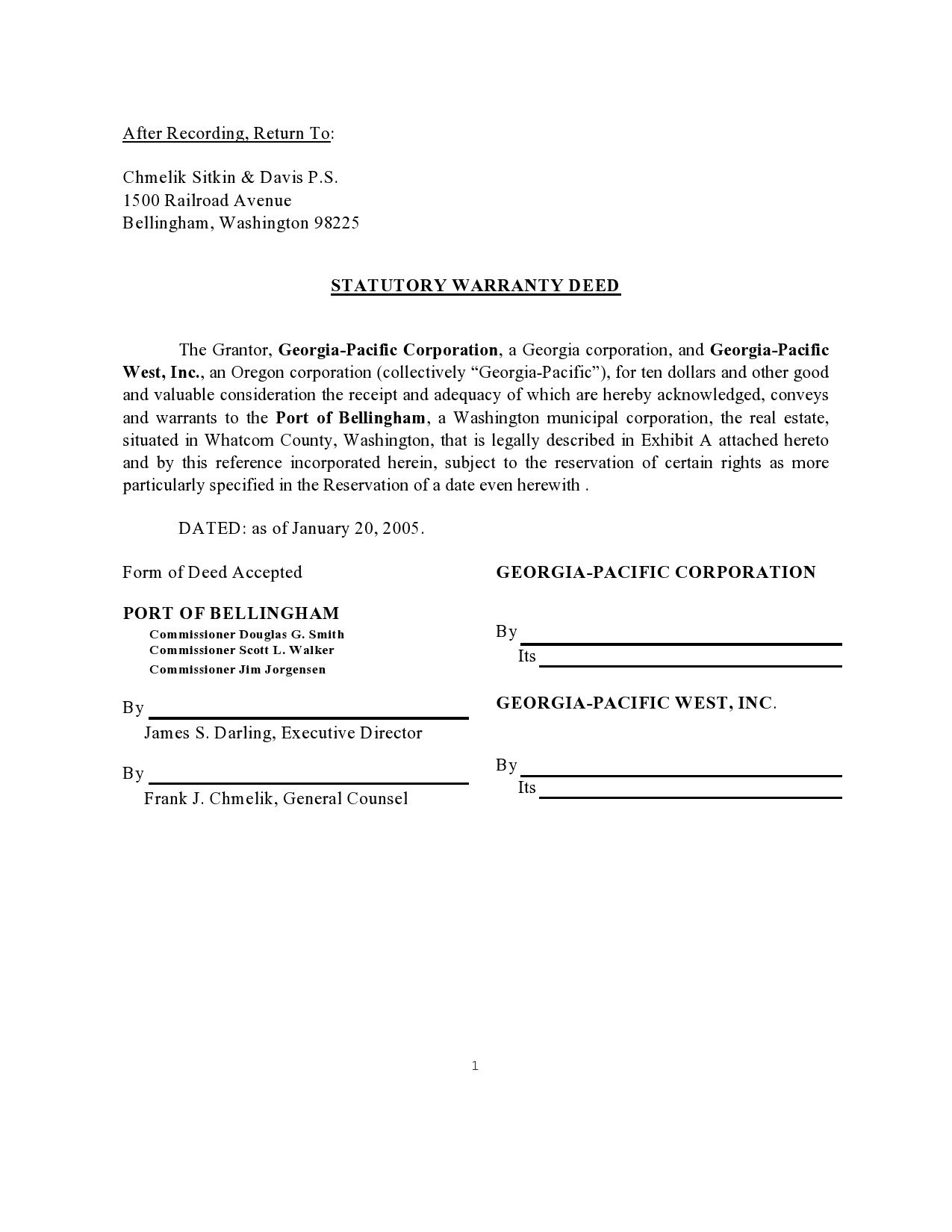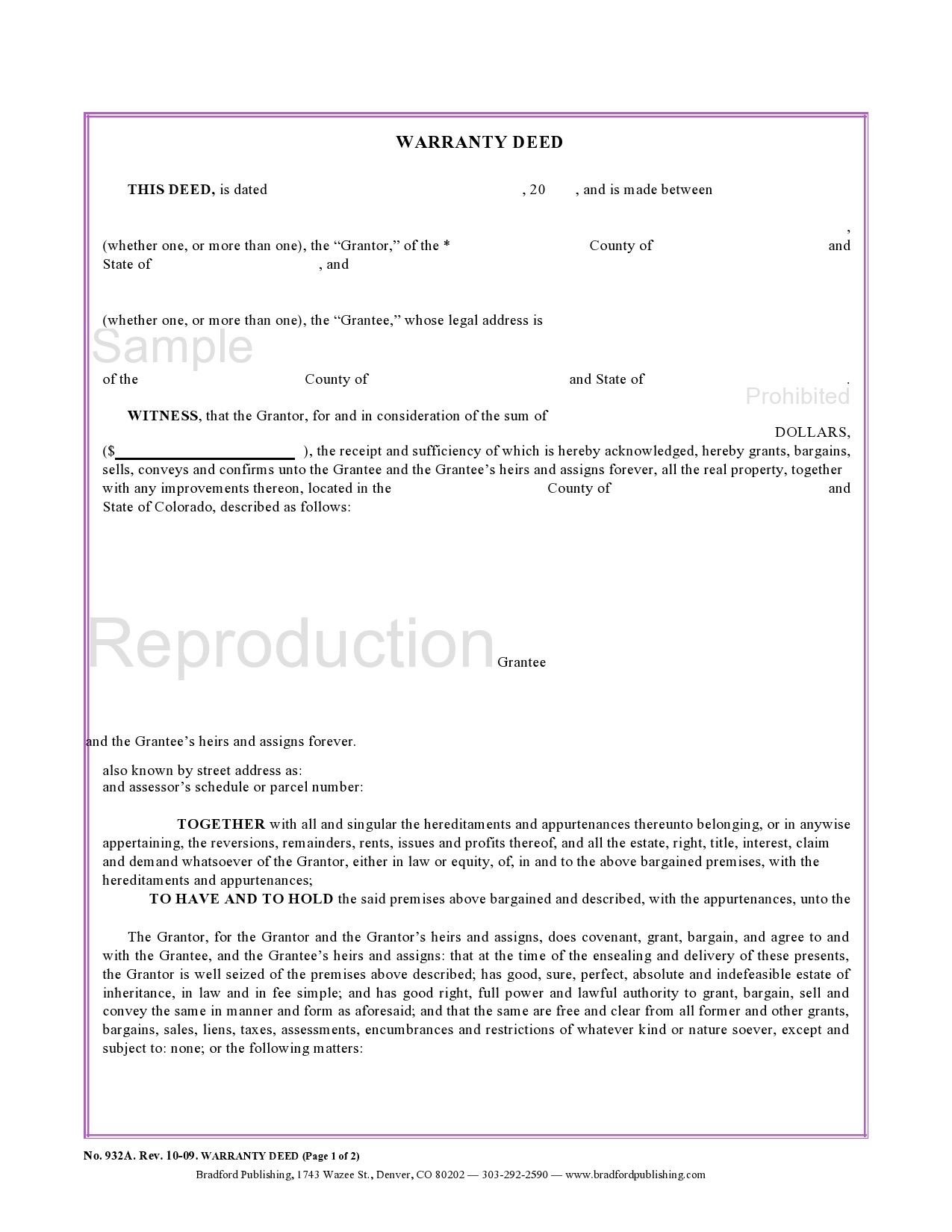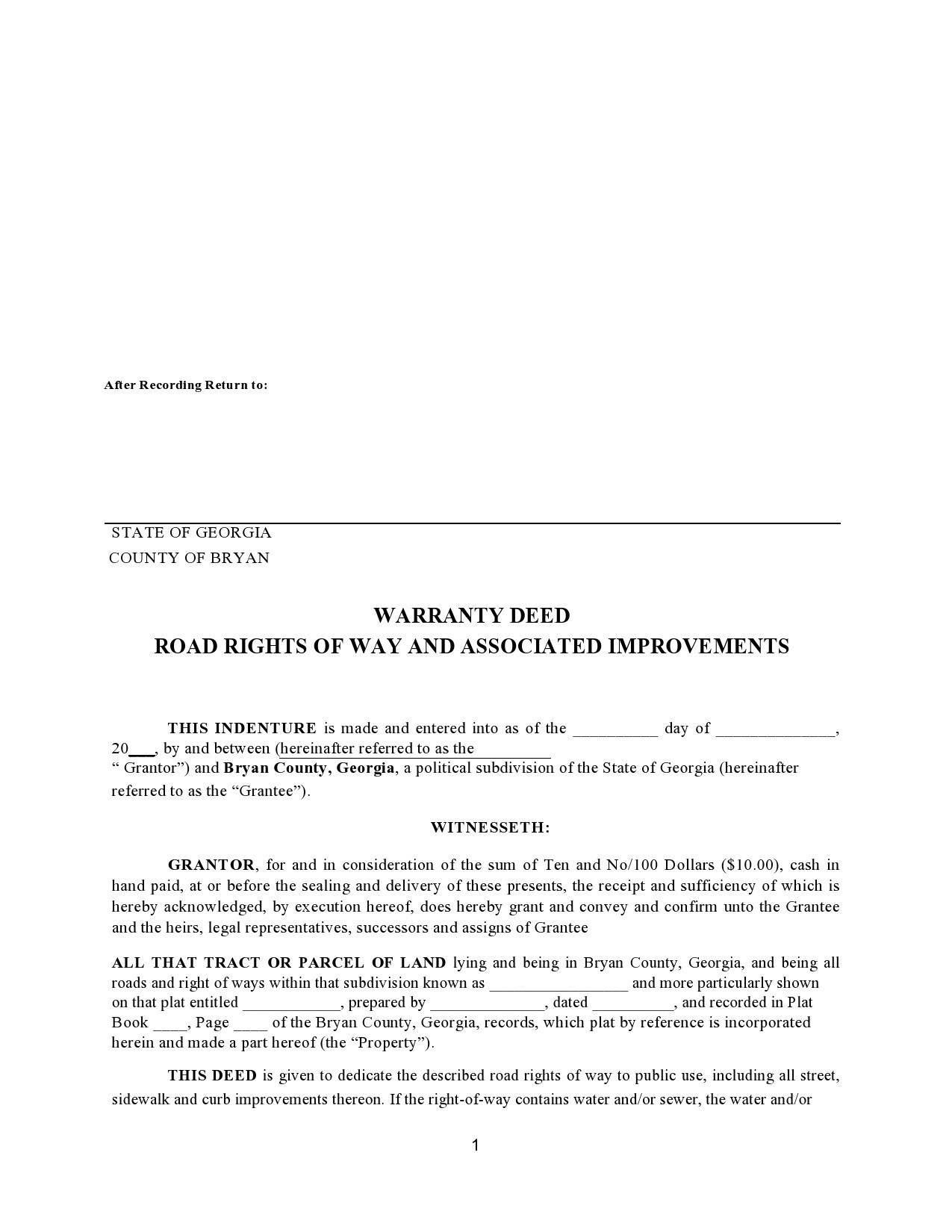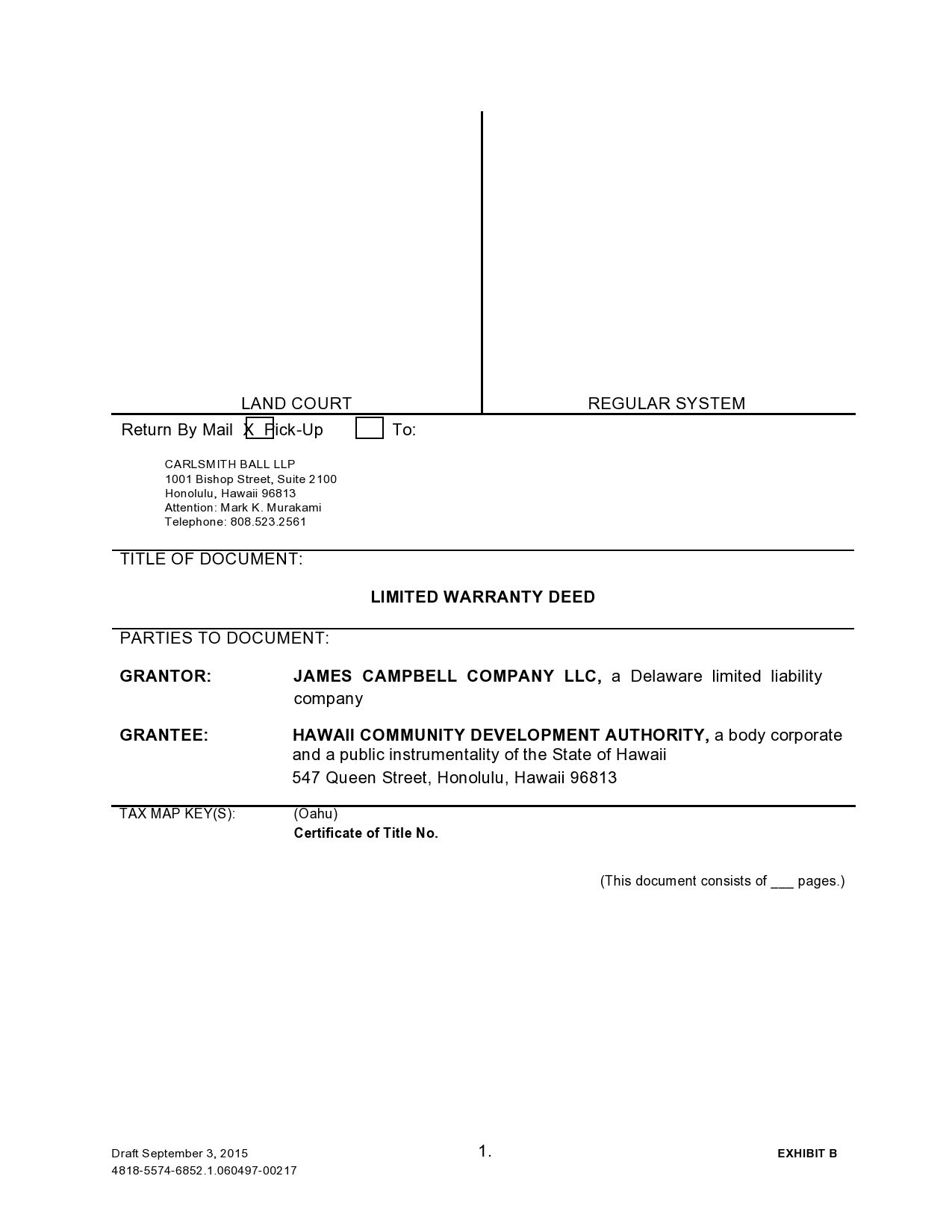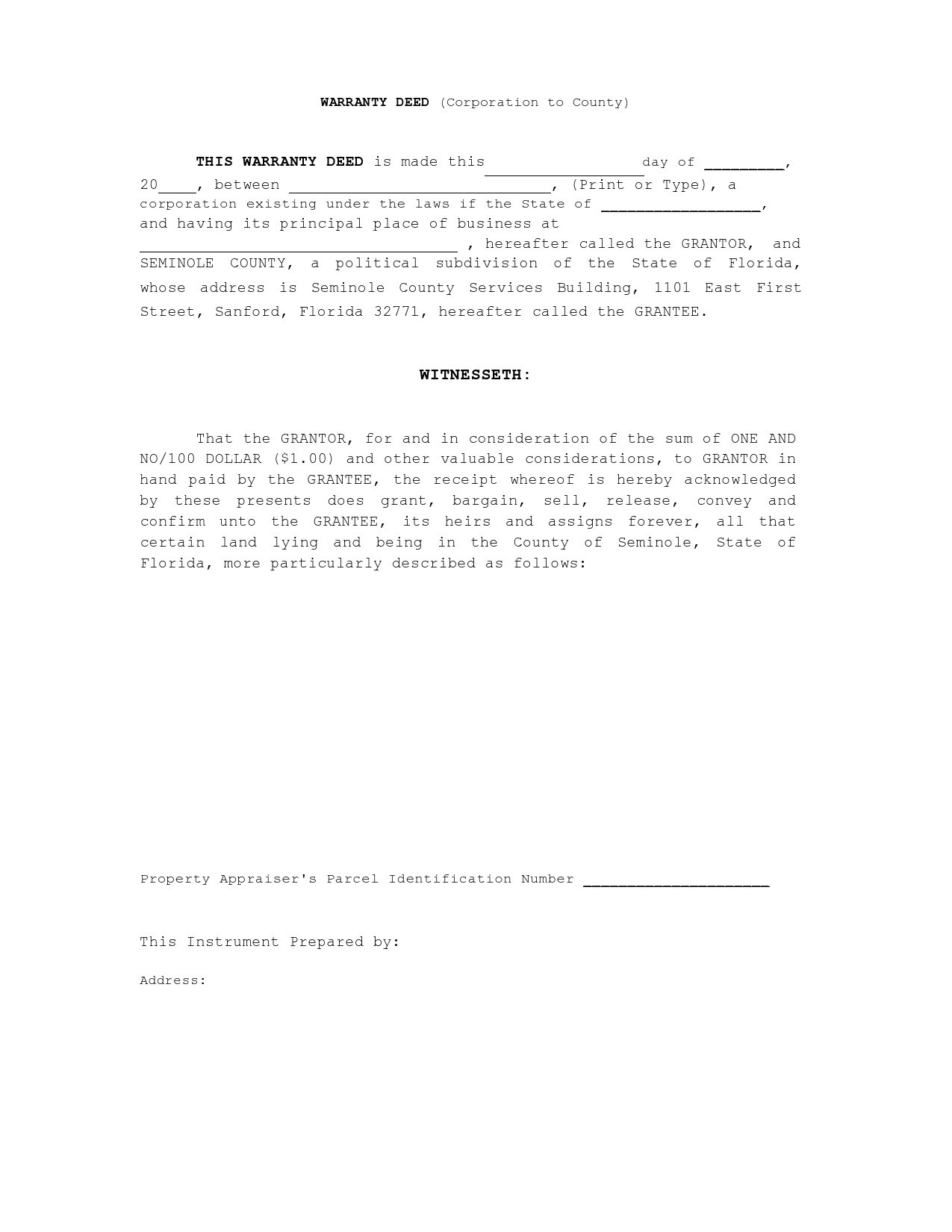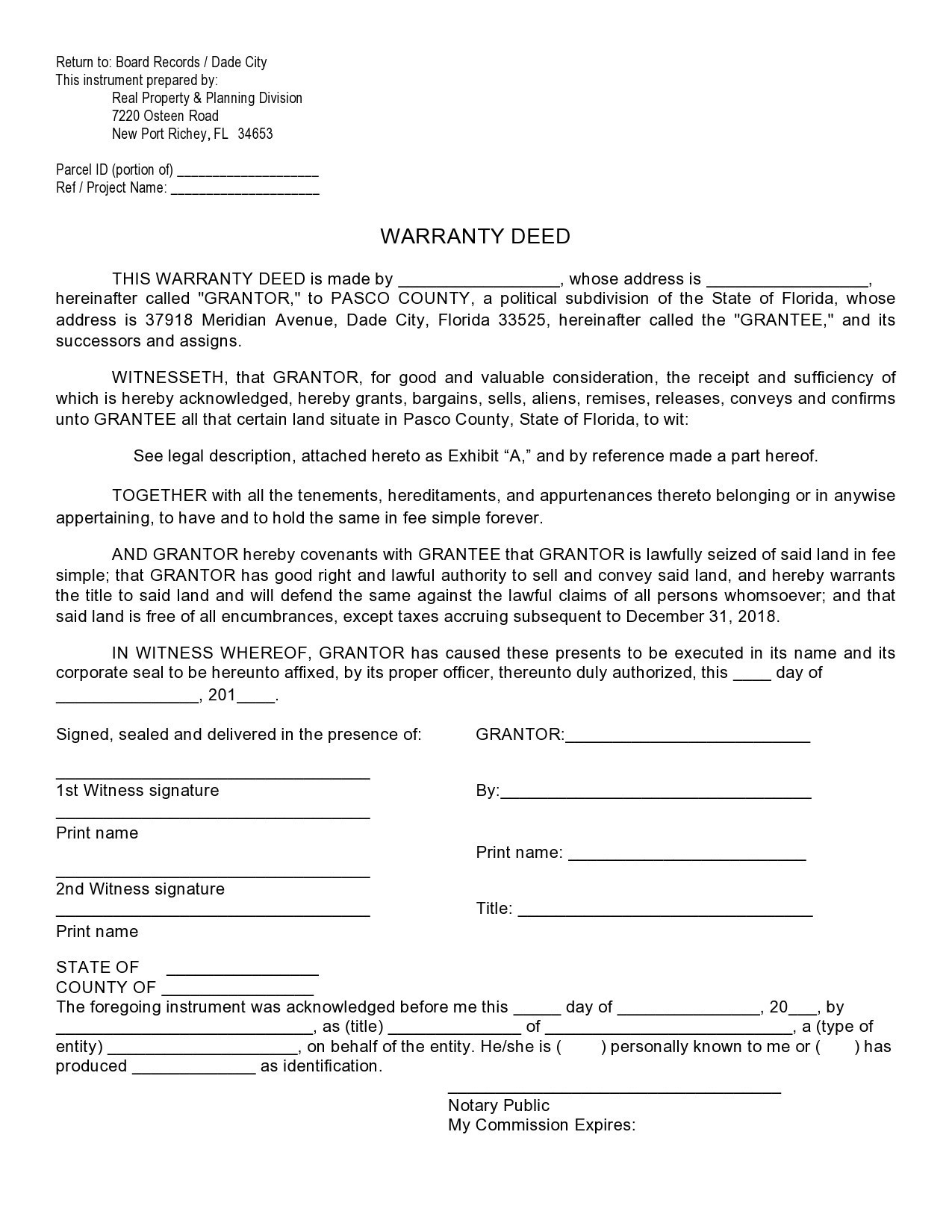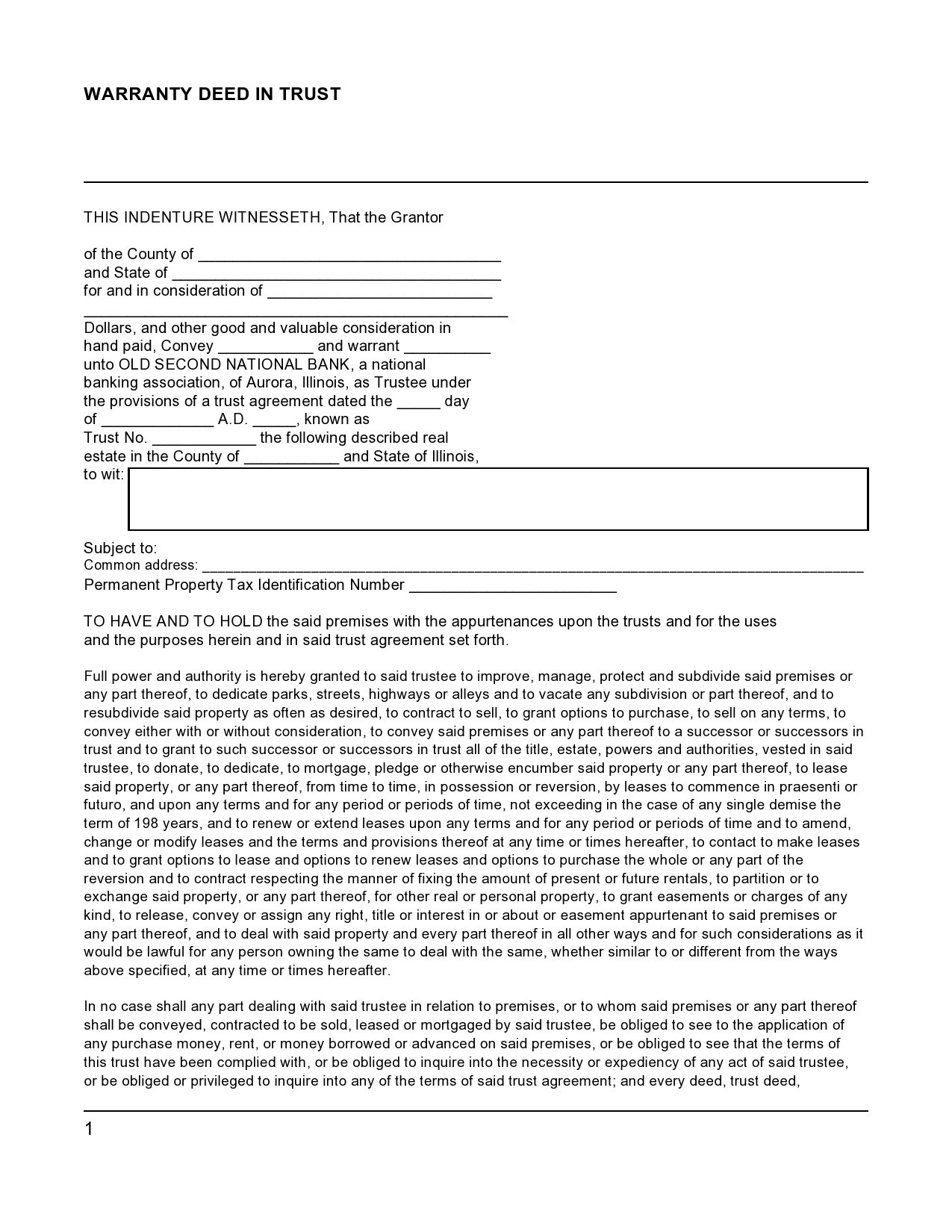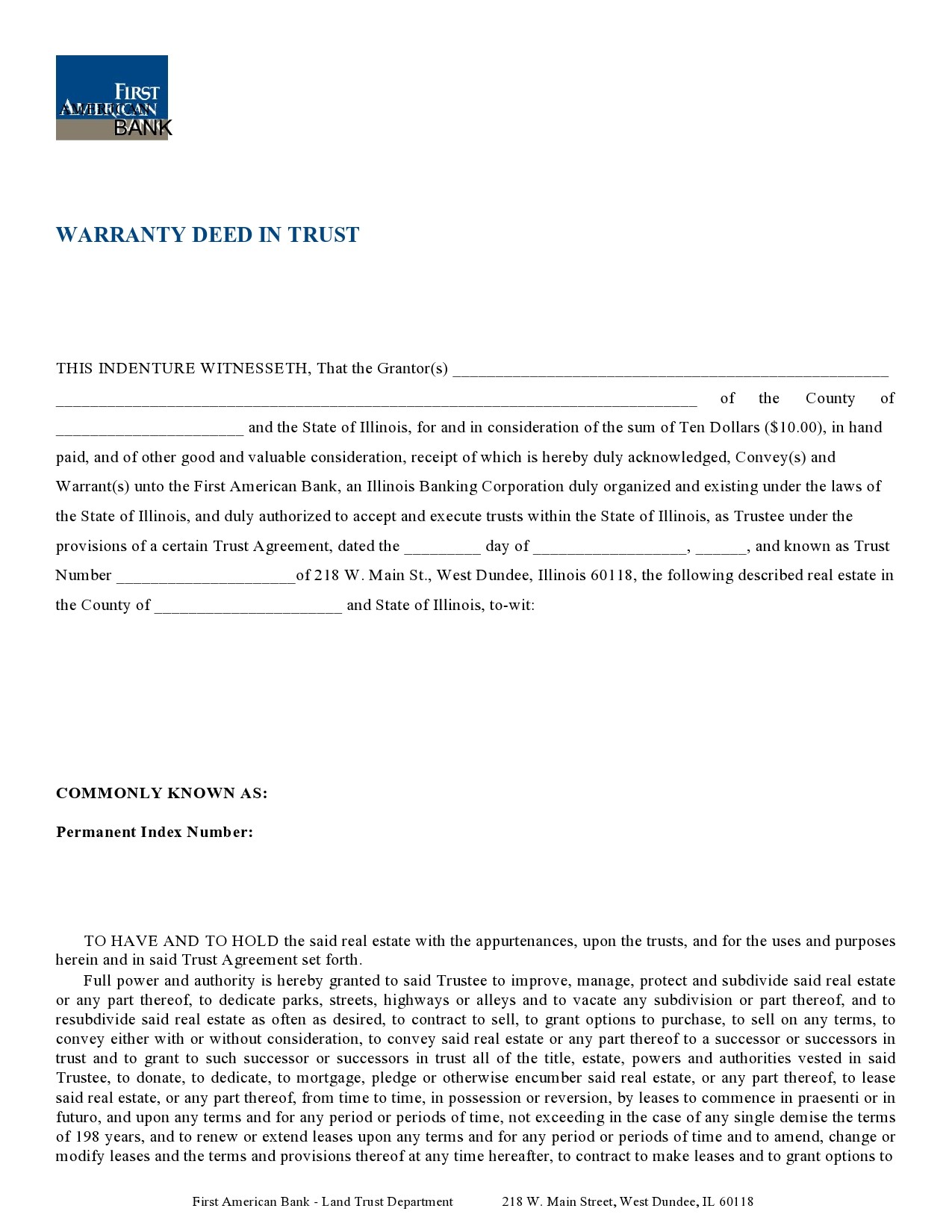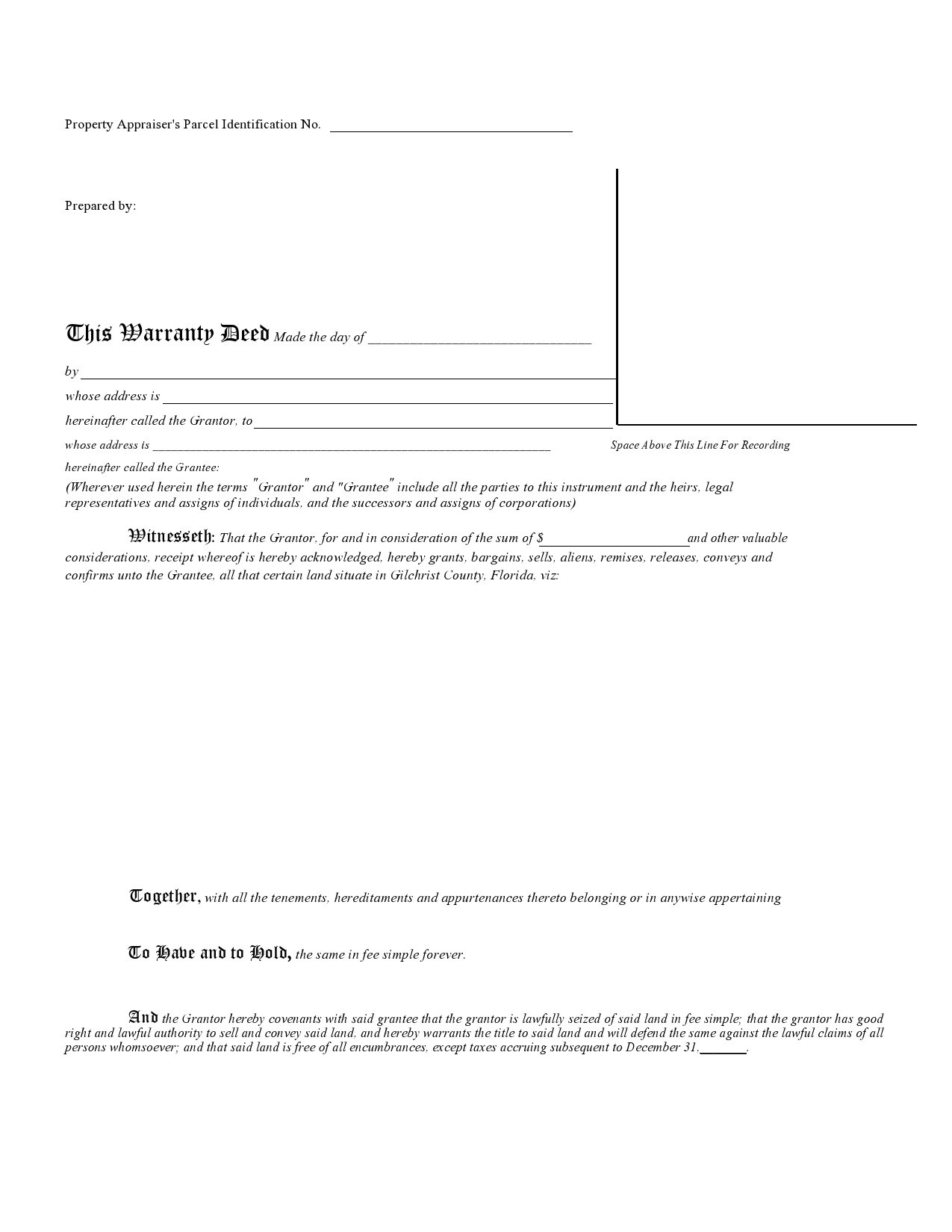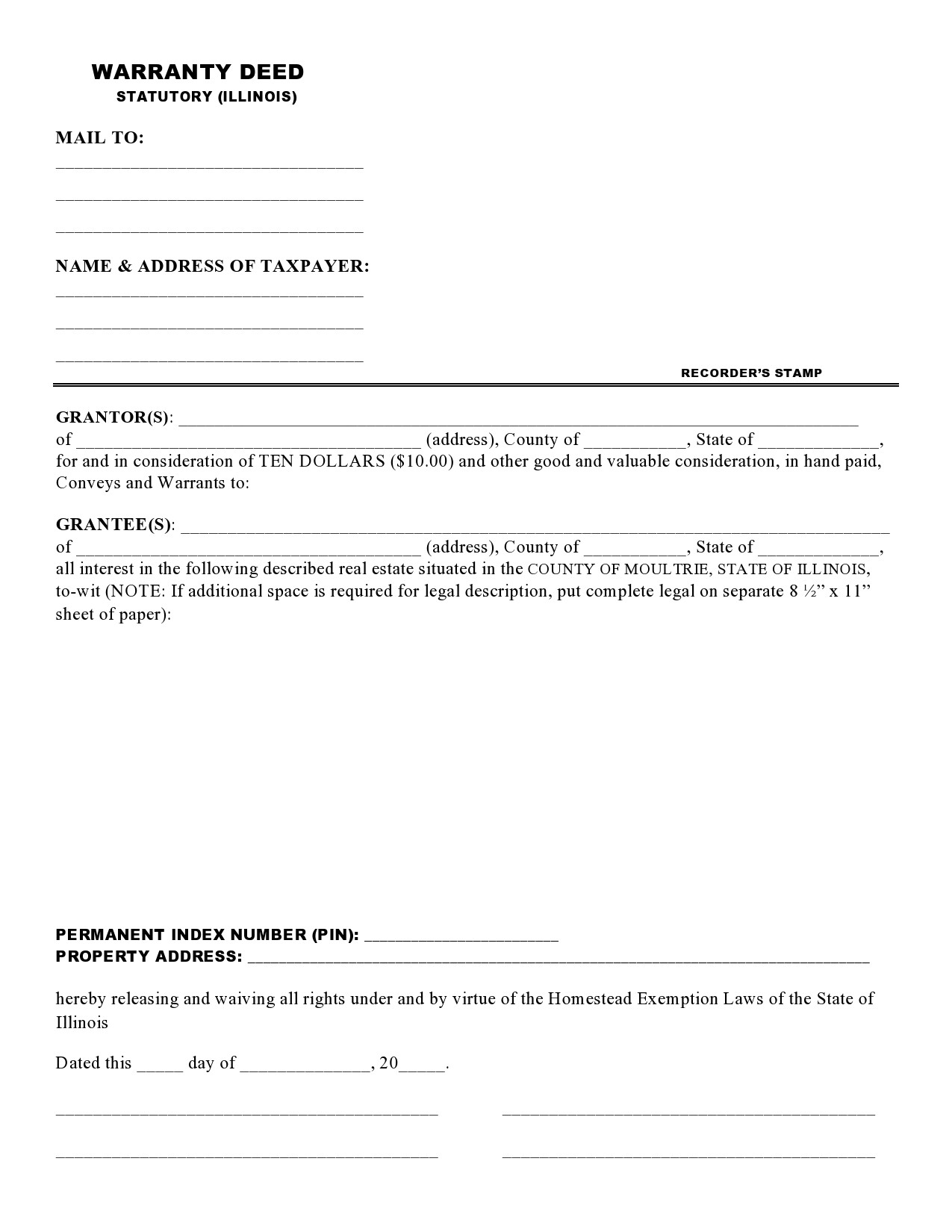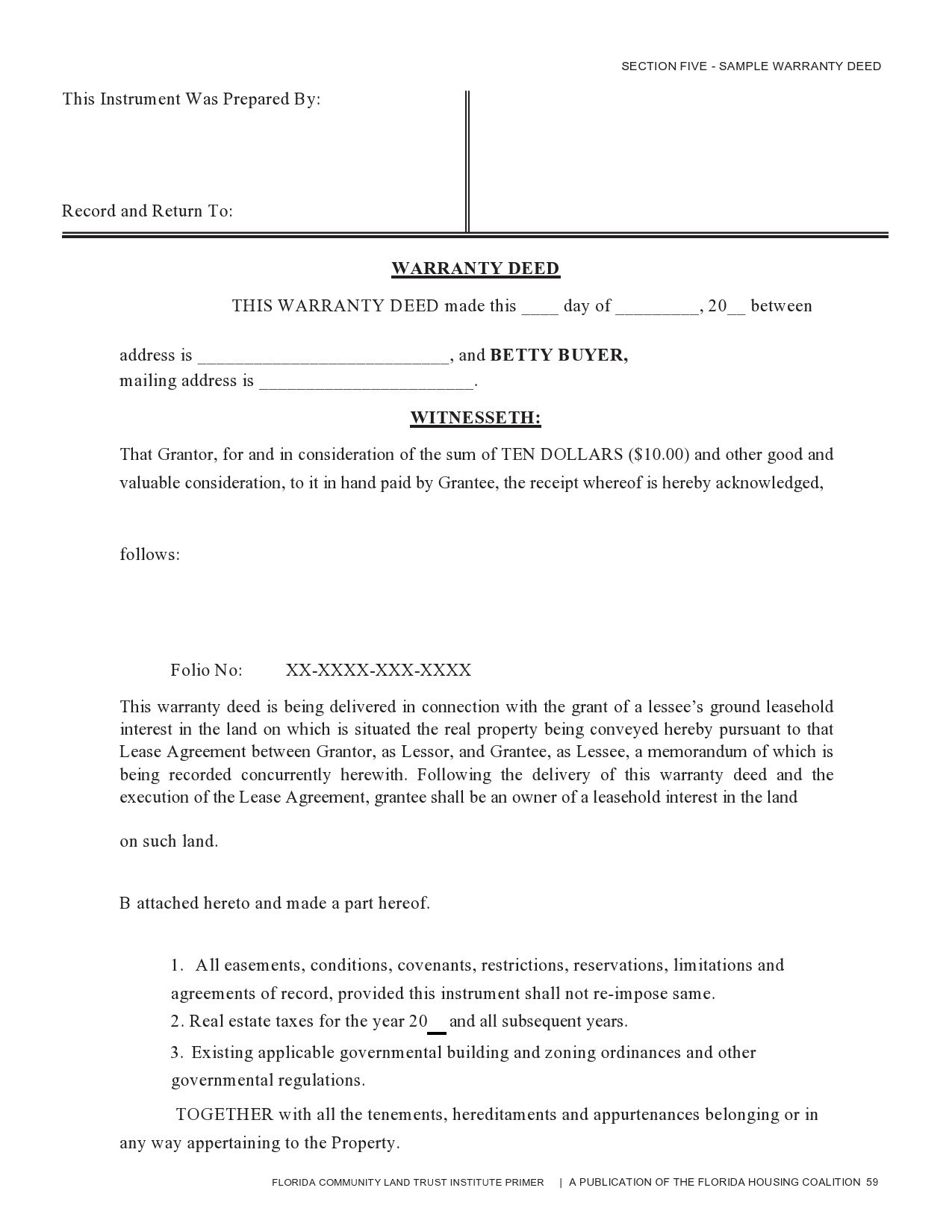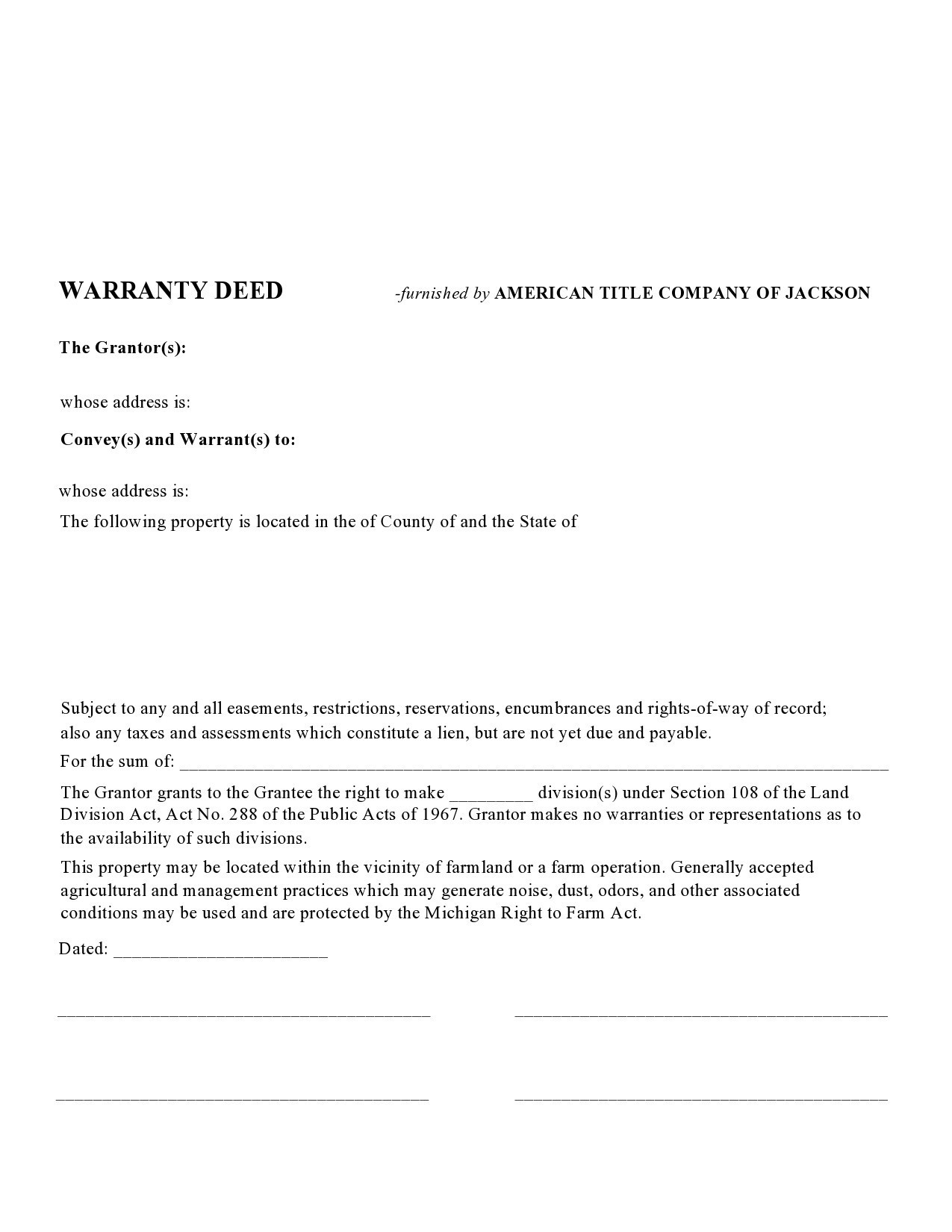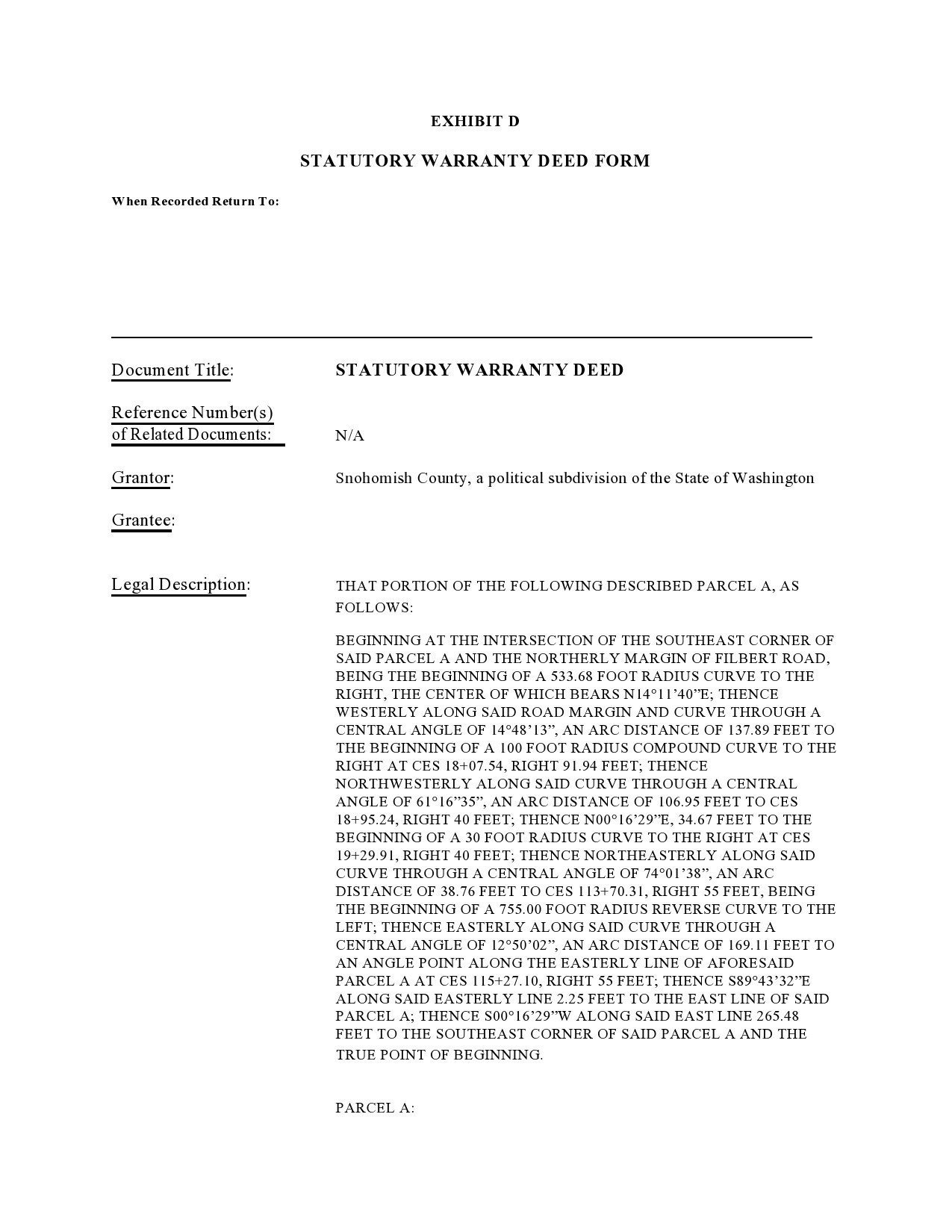When you are writing a warranty deed form, you need to have a warranty deed template to look at so that you know what a general warranty deed needs to include. Warranty deed examples can show you what all you need to include in your document. While a house deed example might be ideal in some cases, your warranty deed form might need to be more specific to your unique situation.
Table of Contents
- 1 Warranty Deed Forms
- 2 What is a warranty deed used for?
- 3 How much does a warranty deed cost?
- 4 Who benefits the most from a warranty deed?
- 5 Warranty Deed Templates
- 6 Where do I get a warranty deed?
- 7 Warranty Deed Samples
- 8 What Needs to be Included in Your Warranty Deed
- 9 Some Other Key Terms That You Might Need to Know
- 10 Warranty Deed Examples
- 11 Is a warranty deed different from a title?
- 12 Warranty Deed Forms Are Essential to Many Real Estate Transfers
Warranty Deed Forms
By State
What is a warranty deed used for?
Warranty deeds are legal forms that are used to state that a grantor/seller is promising to transfer a property to a grantee/buyer. This document is used for a piece of real property which is usually a house, some land, or a building. Warranty deeds can also be called full covenant warranty deeds. These two documents include six key promises that are made by the grantor to the grantee:
- Covenant of Seisin. This promises that the grantor’s deed describes the land being transferred.
- Covenant of the Right to Convey. This promises that the grantor has the legal authority to transfer the property to the grantee.
- Covenant Against Encumbrances. The grantor will promise that there are no hidden or undisclosed mortgages, covenants, or easements that burden the property or lower its value.
- Covenant of Quiet Enjoyment. The grantor promises to defend against any future encroachment challenges that might impact the grantee’s property.
- Covenant of Warranty. The grantor will defend against future encroachment challenges to the grantee’s property.
- Covenant of Further Assurances. The grantor will promise to fix future problems with the title itself.
How much does a warranty deed cost?
The amount that your warranty deed will cost can vary per state. You might need to look into the process of completing this deed in your local area if you want to know what the cost is going to be.
Who benefits the most from a warranty deed?
The buyer of the property obtains the most benefits from obtaining a warranty deed. When a warranty deed is recorded, the seller provides assurances that the buyer should not expect anything to happen that will impact the transfer of the title to them.
Warranty Deed Templates
Where do I get a warranty deed?
The warranty deed has to be generated by the grantor for use in a transfer of property. You might have a legal expert take care of creating this document, but you might also be able to create this form yourself if you are the grantor. This is an important document for this kind of process, and you will need to be sure that you figure out if you are going to create the form or if you are going to hire someone to do it for you. Either solution can be the right choice for your needs.
This deed is not like a quitclaim deed or a special or general warranty deed that acts as proof of ownership as well as a warranty. The warranty deed is best suited to the sale of real property. The other deed types are more often used for inheritance and simple transfers. Having the right document in your hand is critical for a variety of reasons, so you need to be sure that you are creating and drafting the right kind of deed for your situation.
There are two main types of warranty deeds that you might need to write:
- General Warranty Deed. This deed is a legal document that is used to transfer ownership of real property by guaranteeing that the property is warranted against all possible defects. This offers more protection to the grantee because it means that the entire history of the property is guaranteed by this document. This is the maximum legally protected document in this category.
- Statutory Warranty Deed. This kind of warranty deed is an abbreviated general warranty deed that uses state law to define what is provided to the buyer as far as promises. Some states do not have laws that set up this kind of deed.
- Special Warranty Deed. Special warranty deeds are also known as limited warranty deeds. This is a legal document that guarantees against defects to a property’s title during the period when the grantor owned it. This might be used when the seller doesn’t want legal responsibility for claims against the title before or after the time when they were the owner of the property. When such claims happen, you have to defend your title in court.
Warranty Deed Samples
What Needs to be Included in Your Warranty Deed
These are the items that need to be included in your warranty deed. You cannot leave out any of these items if you want your warranty deed to hold up in court if it should be needed. You also want to be sure that you do not forget any of these necessary sections of this important document.
- Grantor. This is the individual or corporation that owns the property. You need to make sure that you use a full legal name for this section. You cannot use nicknames in the naming sections because if the wrong parties are indicated, the document will not be binding.
- Grantee. The individual or corporation who will now take ownership of the property. This person or entity needs to be indicated by their full legal name as well. You cannot use nicknames for any of the named sections of the document, or it might not be legally binding.
- Mailing Addresses. All of the parties who are named in the document also need to have their mailing addresses indicated on the document. You will want to be sure that this is the full address for both parties.
- Joint Tenancy. Warranty deeds must be used to transfer ownership to multiple owners. These new owners are called joint tenants. Each of these joint tenants will own a share of the property, and they can sell or bequeath their unique share as they would like.
- Consideration. This is the amount of money that will be paid for the property if any.
- Legal Description. This is typically located on the property deed. This is the legal description that helps to identify which property is being transferred in the document.
- Parcel Number. This is the number that is listed on the property tax statement. If you cannot find the parcel number, you can always call the city or county court office, and they should tell you what the parcel number is.
- Witnesses. There are states that do require that there are witnesses to the signing of the document. These people will also need to sign the document and date their signature.
- Signatures. The grantor and grantee both need to sign the document and date their signatures.
- Notary. The transfer of the property and the signatures need to be witnessed by a notary public. This person will verify that the signatures are valid and that the document itself has been correctly executed.
This warranty deed that you have created will need to be filed in the public records of your local land records office. This might be called the County Recorder’s Office, or it could be the Register of Deeds Office. This needs to be a matter of public record to be legal, so you cannot miss this step in your process.
Some Other Key Terms That You Might Need to Know
You will possibly need to know these other terms when you are writing a warranty deed form. You should always know all the various terms that are related to these kinds of documents to be sure that you are creating a document that will hold up in court if you should ever need for it to be used in this way.
- Easements. These are rights to keep using the land or a part of it. This might be permission to fish, to use an access road, or other special permissions that might impact the use of the land. Easements can be more typical in farmland but might be present on any piece of property.
- Life Estate. This happens when the grantor reserves a life estate interest in the property so that they can keep being the legal owner of the property until their death. This is often done for tax purposes, but there might be other reasons that you will want to have this clause in place.
- Mineral Rights. The mineral rights are often one of the main valuables of a property that might include subsurface oil gas and other mineral rights. Mineral rights will not interfere with neighboring landowner rights to support or to subjacent support. Excavations for these minerals need to be done in a way that does not impede or impact the use of other properties. Liability and lawsuits can ensue if there are issues with how the mineral rights of a property are utilized.
Is there a difference between a warranty deed and a quitclaim deed?
Warranty deeds and quitclaim deeds are both used to transfer a property from a grantor to a grantee. The main difference between these two documents is that the warranty deed offers more protection to the grantee. The warranty deed can enforce the six covenants that were listed above, while the quitclaim deed will not. Warranty deeds are almost always used for when money is exchanged in a transaction that involves property.
Warranty Deed Examples
Is a warranty deed different from a title?
A warranty deed is not the same as a title. A title proves that the owner of the property is the actual legal owner of the asset. A warranty deed is used to transfer a title from the old owner to a new owner. When you own a property, you are the person who holds the title. You have to sign a warranty deed form to transfer the title to someone else during a sale or ever to give away the property.
These two documents are used for different parts of the same need in many cases, which means that you might need both of them to handle your warranty deed transaction. There are many complicated documents that are needed to complete a sale of a property or a transition of a property to another entity or person. You will want to be sure that you use all the right documentation when you engage in these processes so that you are not leaving legal agreements to chance that should be documented properly for the protection of both parties involved in the sale or transfer.
Warranty Deed Forms Are Essential to Many Real Estate Transfers
You will find that warranty deeds are often critical to the process of transferring the ownership of a real property to another entity or person. You should not engage in a handshake deal for this kind of process, and since this is not legally binding, this kind of transfer of property might not even be recognized by legal entities or insurance companies.
You will want to be sure that you are not writing your warranty deed incorrectly. This is a very important part of the process of transferring the ownership of a property, and you should not take the writing of this document lightly. The money that changes hands to transfer ownership of a property needs to be backed up by documentation in case there are ever questions or in the case that there is a legal issue related to the ownership of the property as well.

